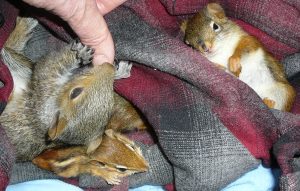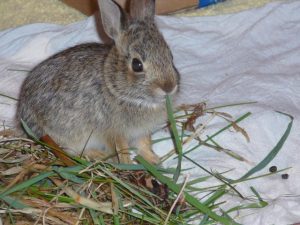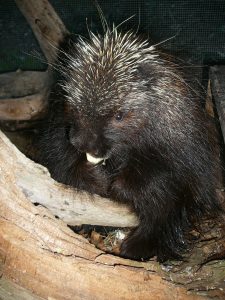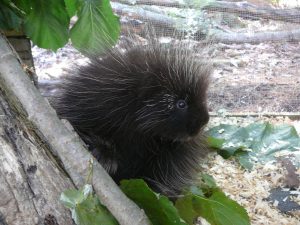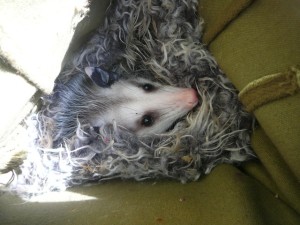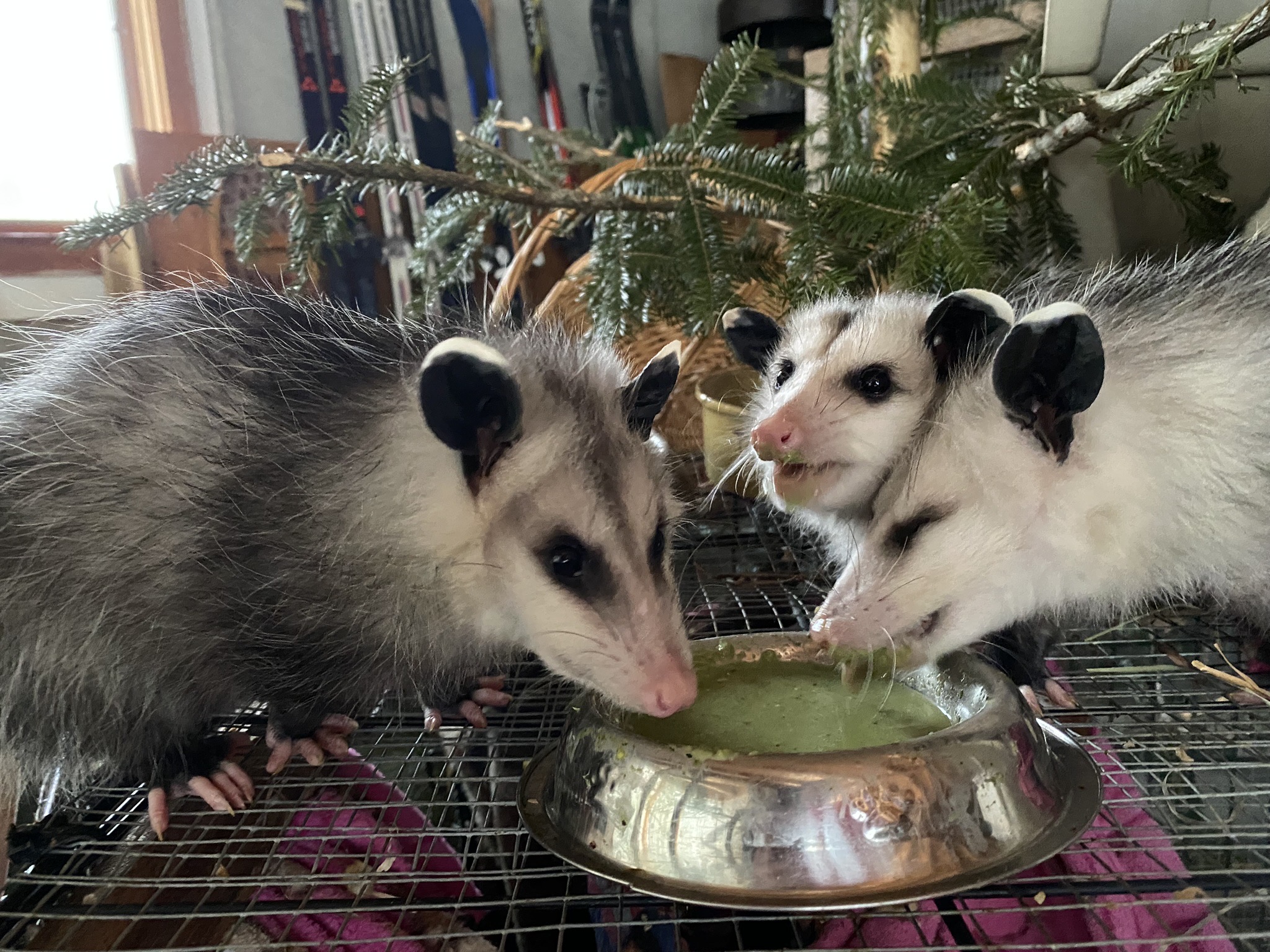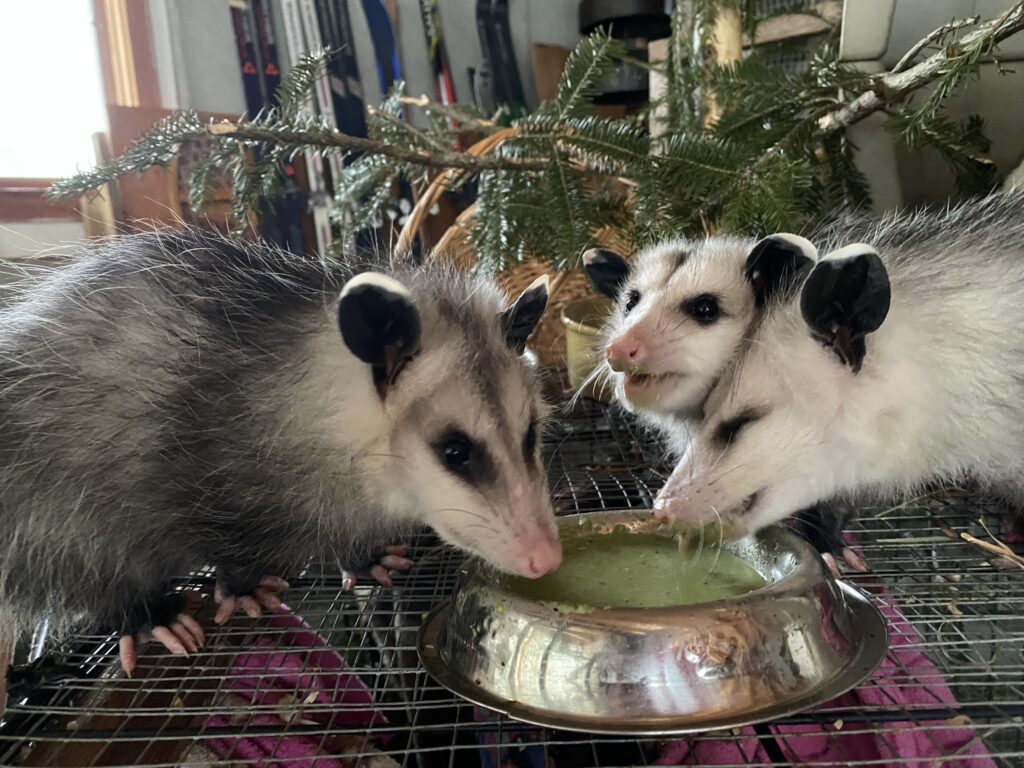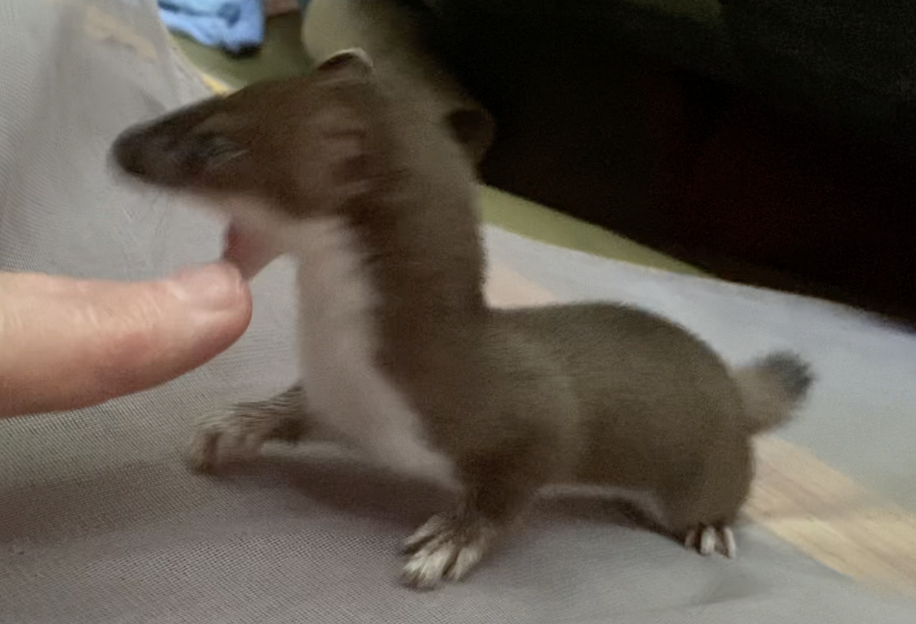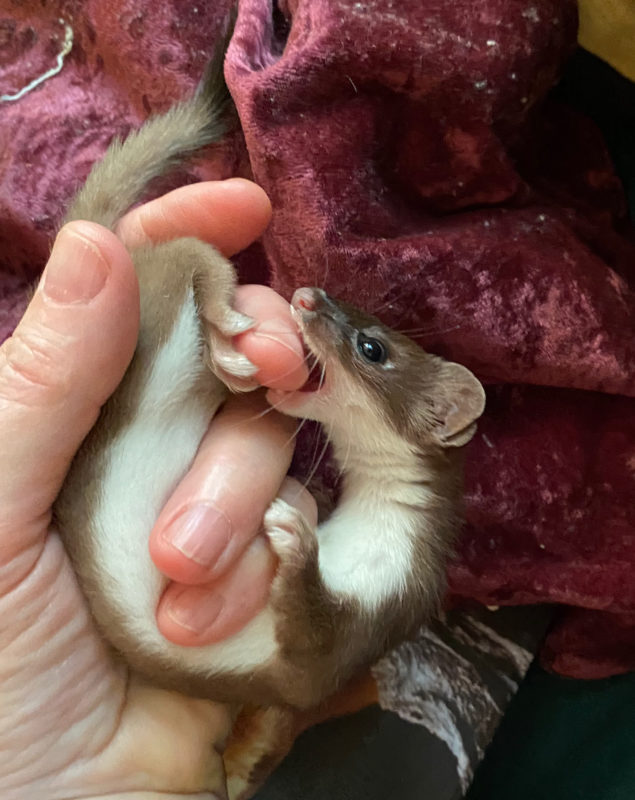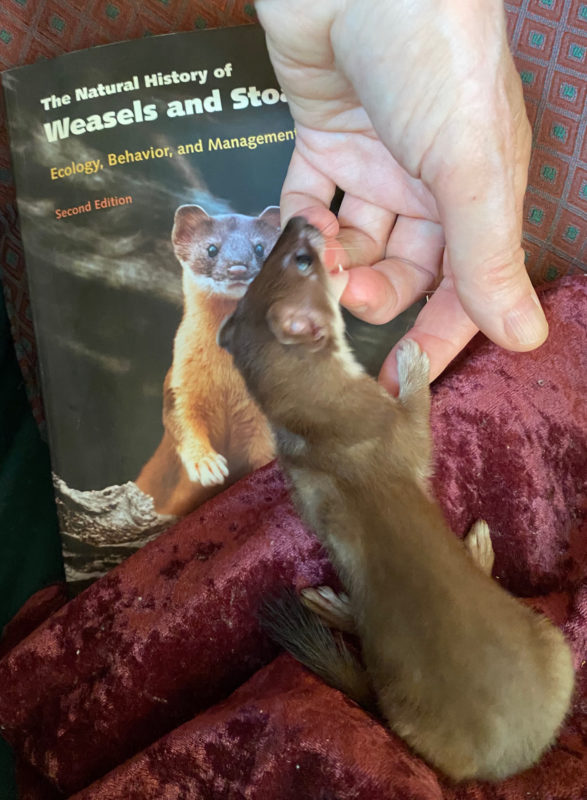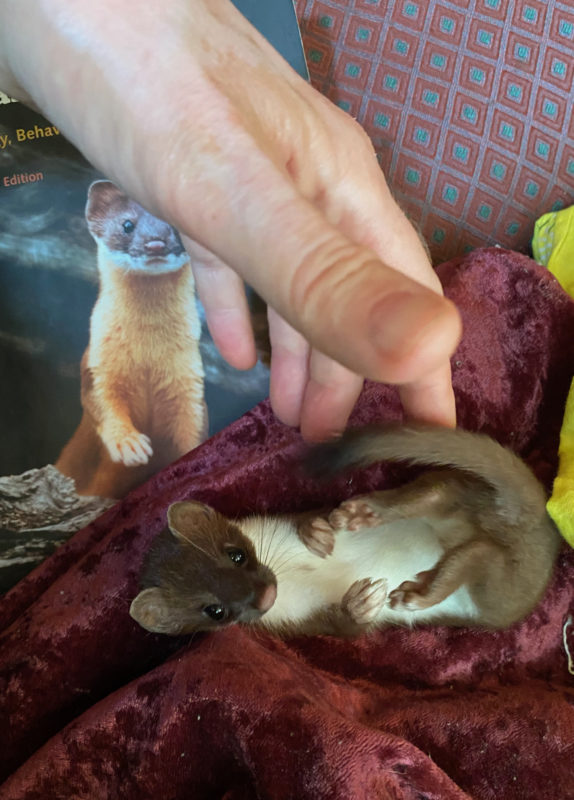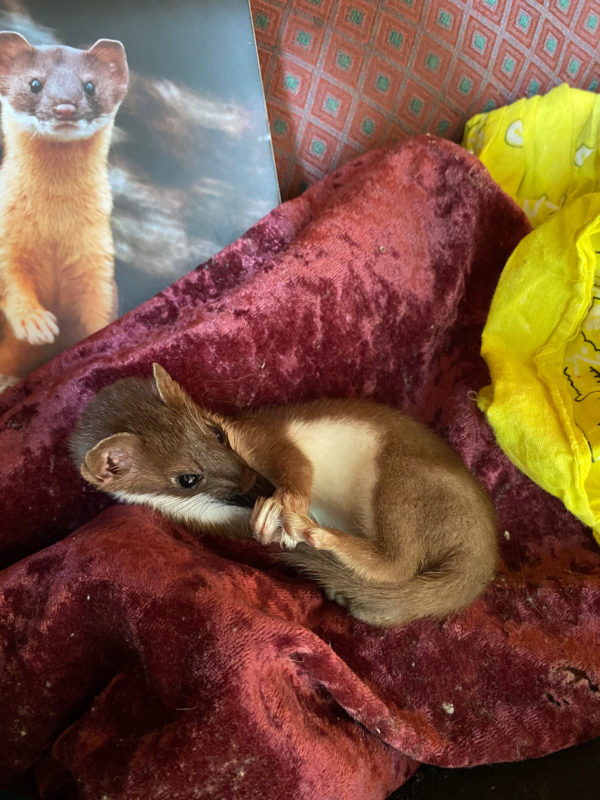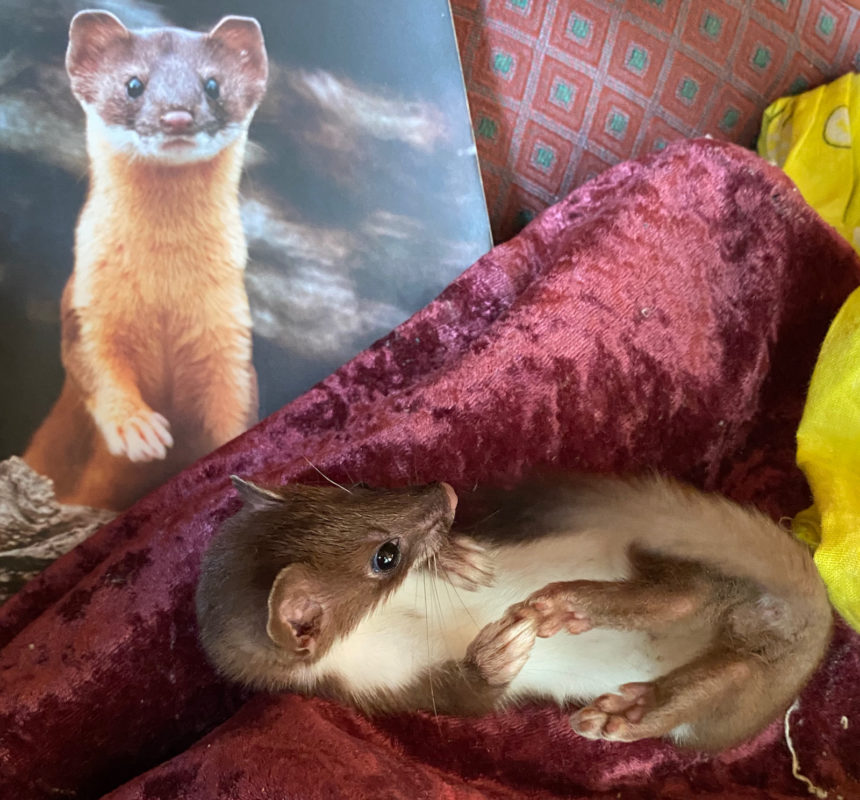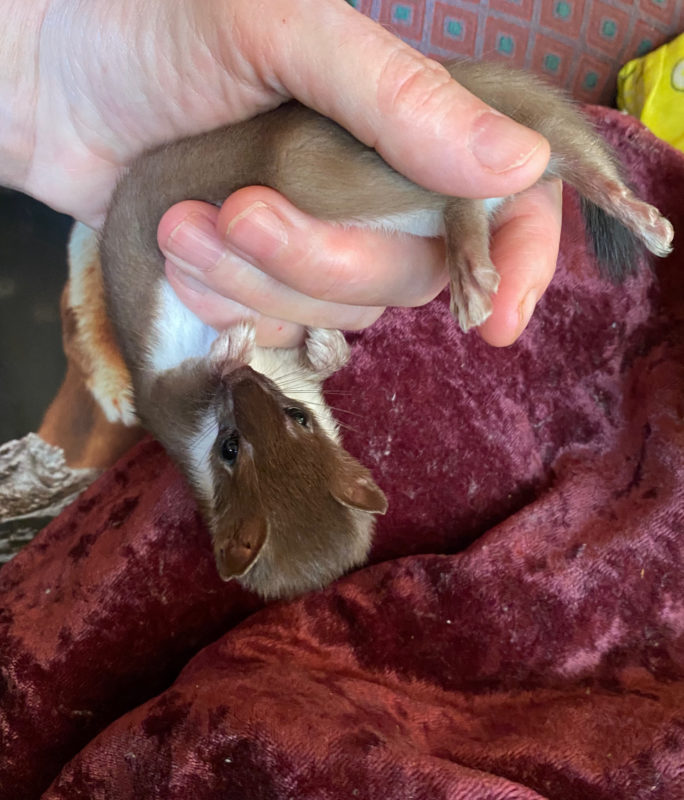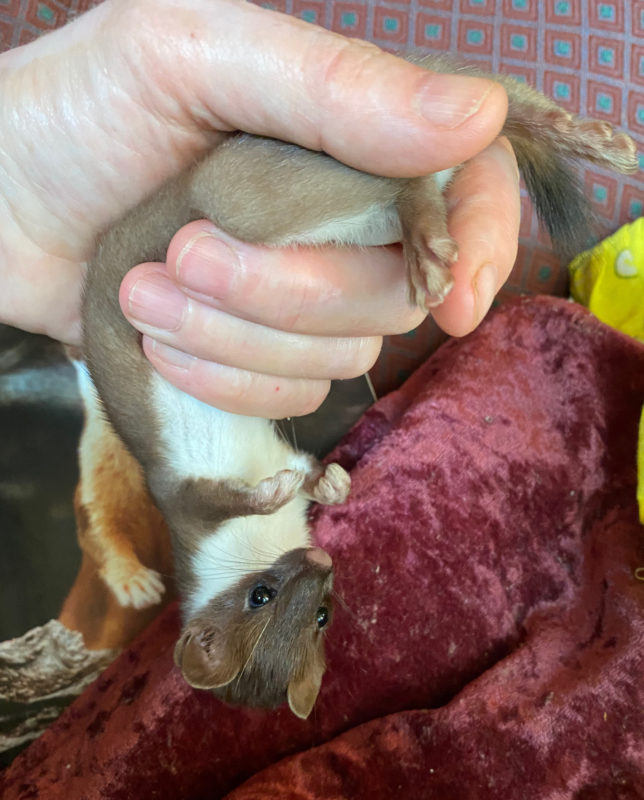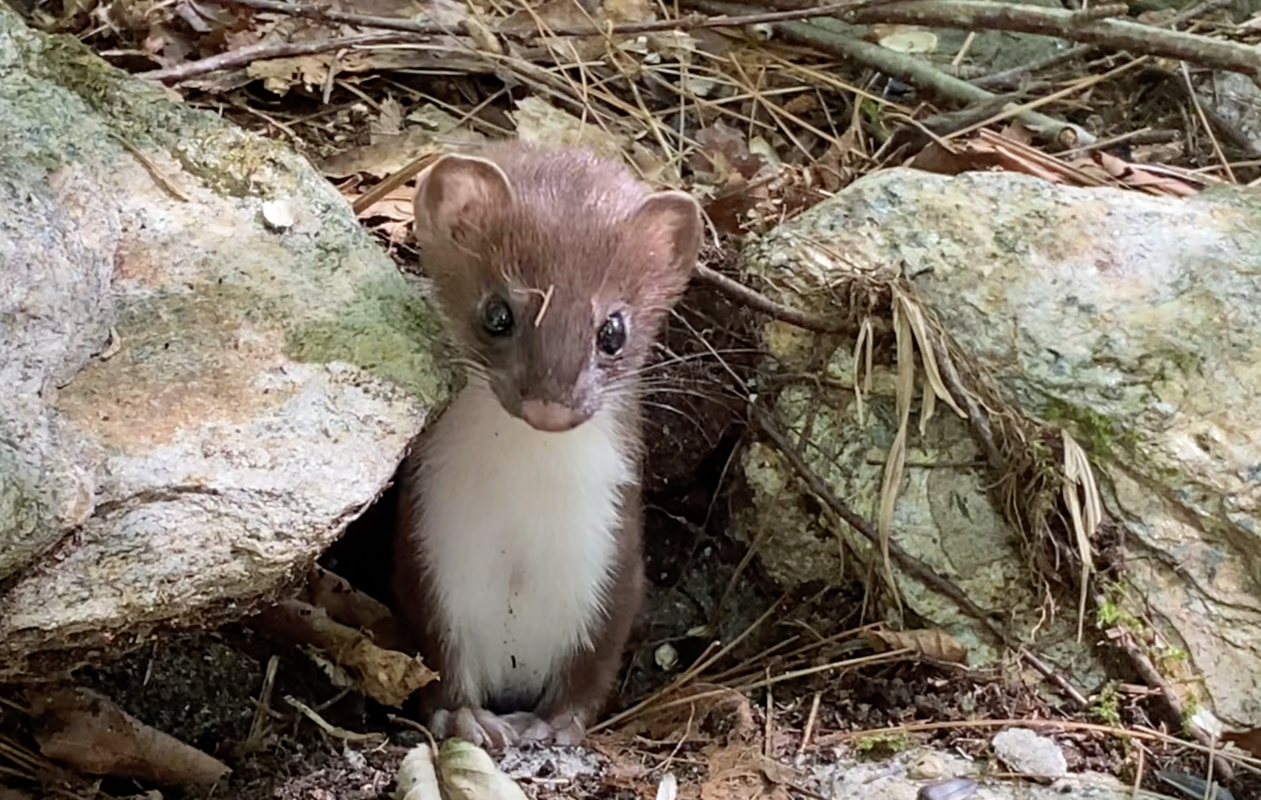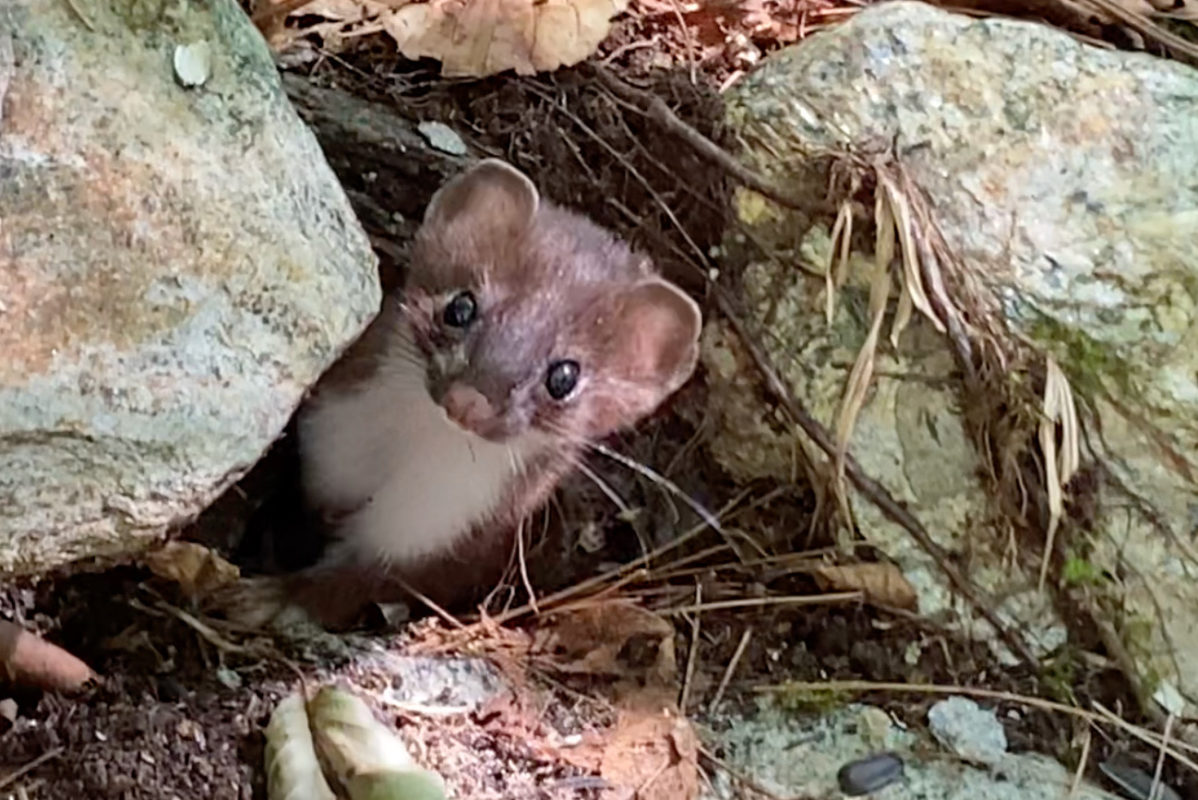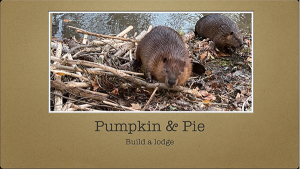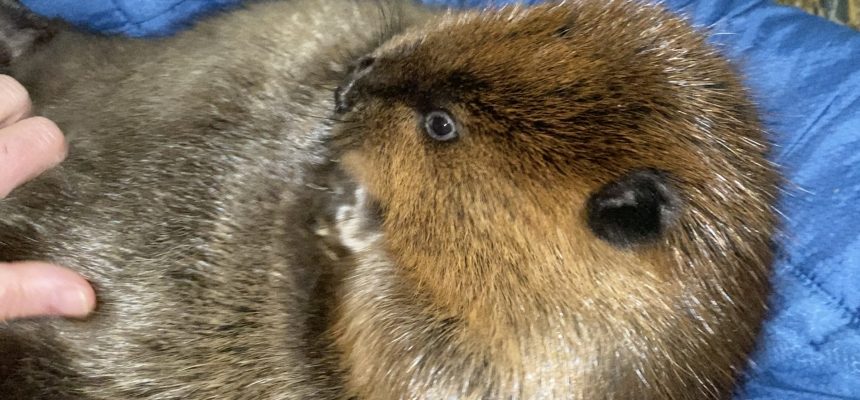
Life for wild animals is always dangerous, but humans have introduced a whole new set of hazards—cars, cats, window panes, swimming pools. . . As a result, you might encounter an animal in need of assistance, and need some assistance yourself.
Please call BEEC at 257-5785 (after-hours and weekends, call 490-6580) if you find a wild animal that seems to need help. You can also e-mail .
Patti Smith, BEEC naturalist, and Ruth Hart, BEEC board member, are a wildlife rehabilitators licensed by the Vermont Department of Fish & Wildlife to treat many species of injured and orphaned mammals. They can help you evaluate the situation to determine what, if anything, should be done. They can also help you find wildlife rehabilitators who are qualified to treat other animals that need care.
Contact Patti at (802) 490-6580
Contact Ruth at (917) 496-6890
If you find a bird that needs help, please call Fred Homer at (802) 348-7889 or Rhy Wepaloki at (802) 380-1820.
Are you wondering if a young animal you have found needs help? Here are some tips.
Are you looking for solutions to wildlife conflicts? Head to the Living with Wildlife page.
Are you interested in becoming a wildlife rehabilitator?
Here is a presentation on what’s involved.
Wildlife Rehabilitation Stories
2025:
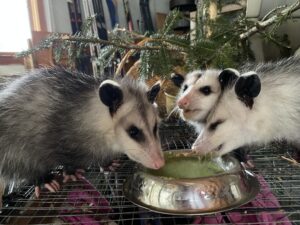
It’s the slow season. In mid-January, the three little opossums that arrived in October are enjoying a winter of ease and luxury. Who says opossums are homely?
2024:
On November 2nd, Lucky’s eye was bloodshot. Within days, it was clear she was in serious discomfort and scratching at her face trying to find relief. Dr Sue Kelly examined her and scheduled surgery at the Windham County Humane Society to remove the eye. Once Dr Kelly and Dr. Cote began to prepare for surgery, they discovered the real issue—a large abscess above her teeth, just below the eye.
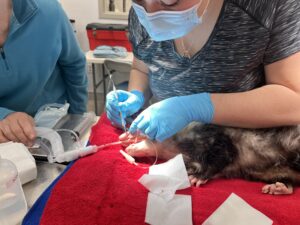
Dr. Cote successfully removed the infected teeth, cleaned the abscess, and treated her self-inflicted facial wounds. Lucky is now resting comfortably with both eyes, along with a good dose of antibiotics and pain relief.
Saving Lucky’s life was made possible by a collaboration between the WCHS, our Windham County Wildlife (Mammal) Veterinarian, Dr Kelly, and by BEEC wildlife rehabilitators.
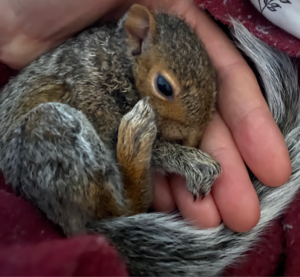
Fall squirrels babies have been trickling in, one at a time, which is unusual. They often come in family groups. We’re up to eight already.
We also have some very small opossum joeys. Their mother was attacked by a dog. When she fled, she left these three behind. They came in in mid-October and will need to be cared for over the winter.
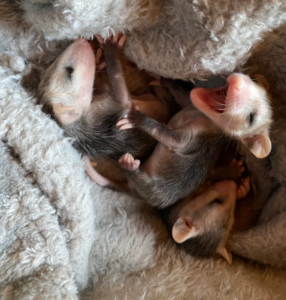
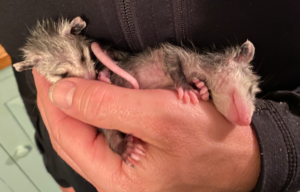
This newborn porcupette (yup, that’s what they’re called) was grabbed by a dog. Mama did not come for her, so Nettles is in our care. Mid-May is porcupine birthing time. Their gestation is seven months. What you see above is what they look like when they’re born. Porcupines have just a single baby. Their quills are soft when they are born, but harden up within a few hours.
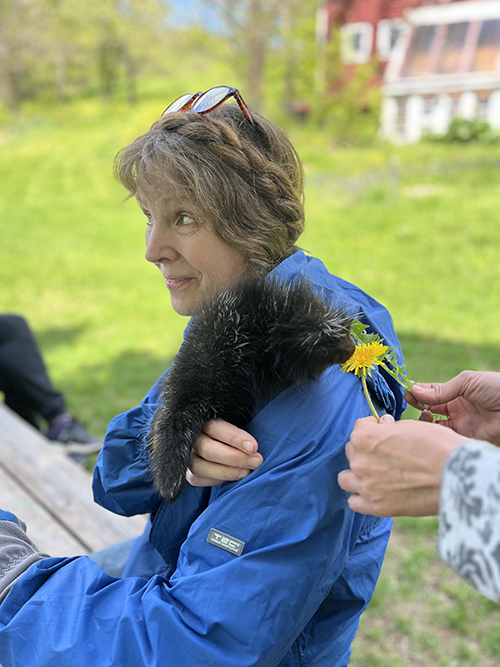
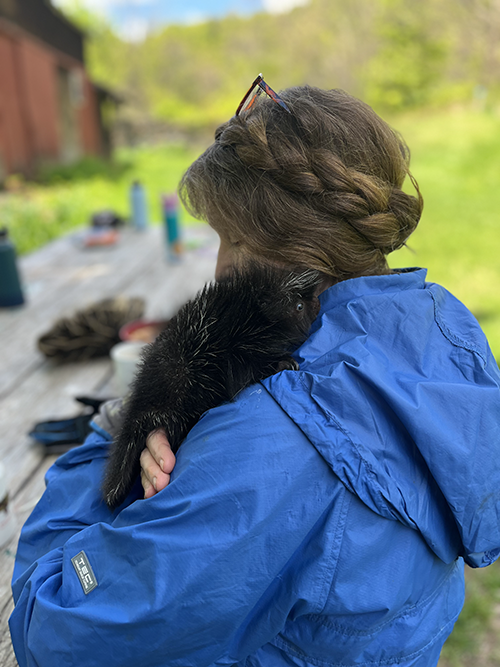
2023:
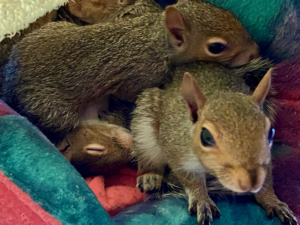
The late summer squirrels orphans are coming in. The first batch fell nearly fifty feet when their tree was cut down. Mama squirrel didn’t come back for them. Three weeks later, they are frisky and are the welcome committee for the flying squirrel and two other litters of gray squirrels that have arrived. The flying squirrel, with the audacity of her tribe, has moved right in with the much larger gray squirrels.
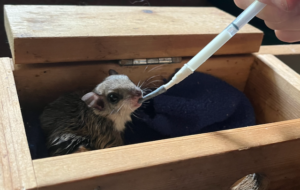
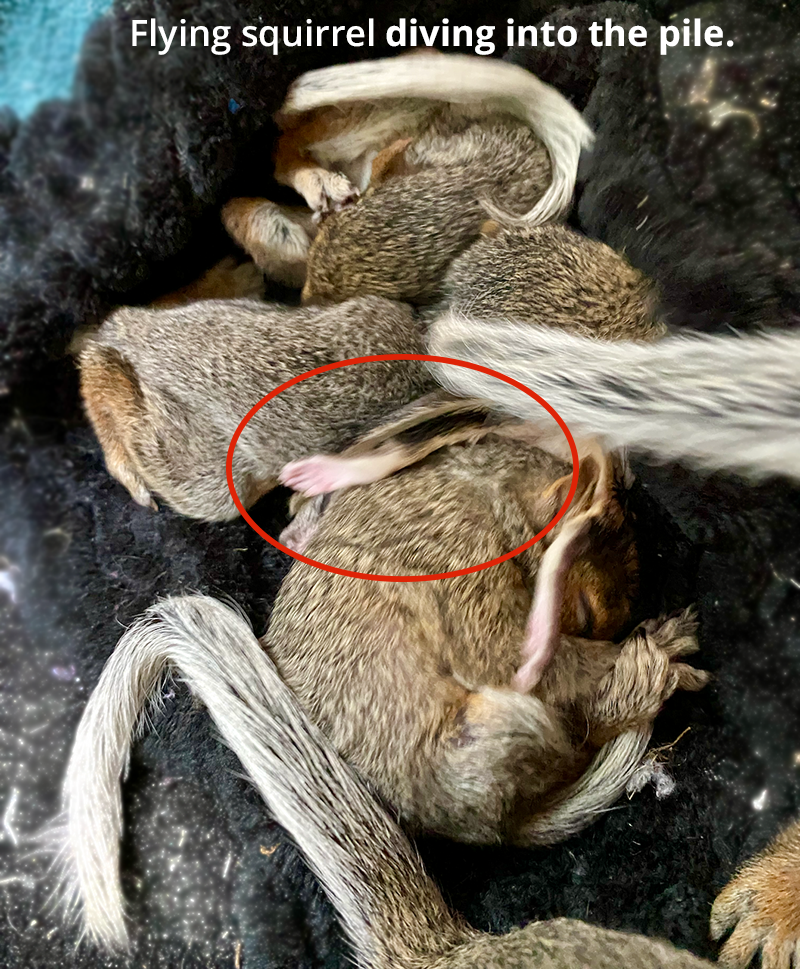
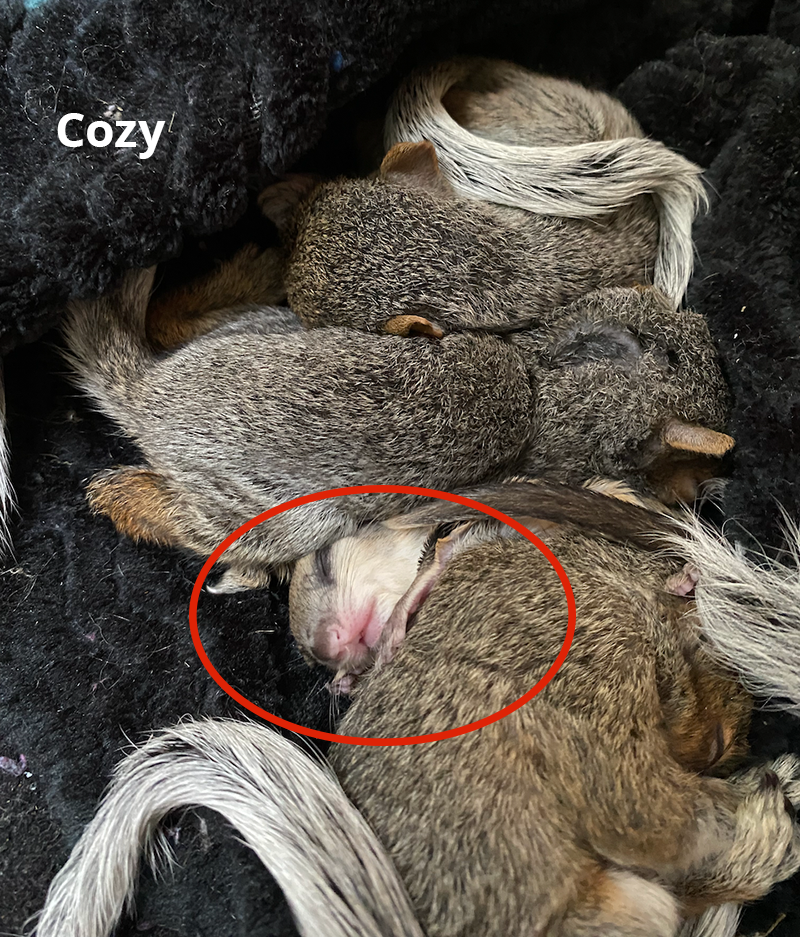
A batch of seven baby opossums were rescued after their mother had been hit by a car. Here are a few of them on release day.
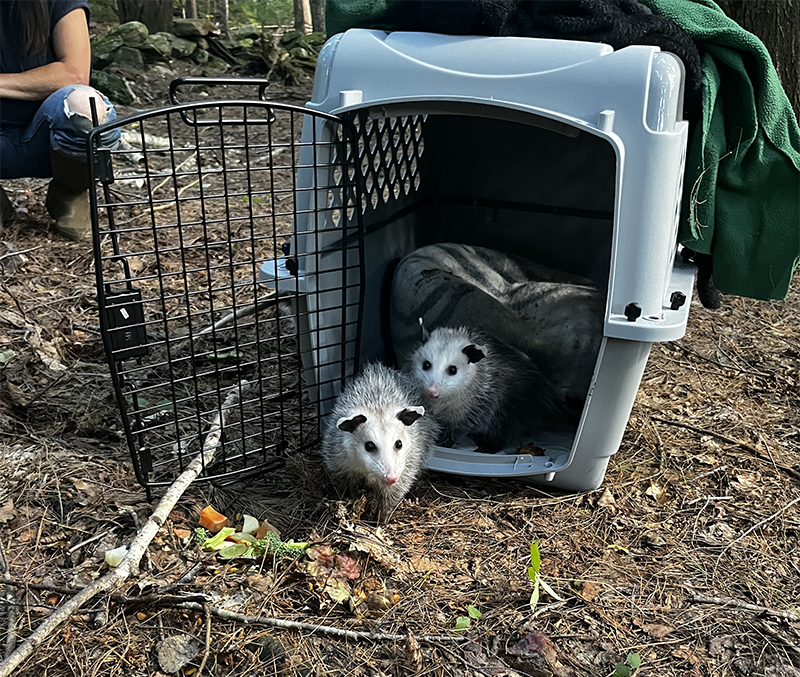
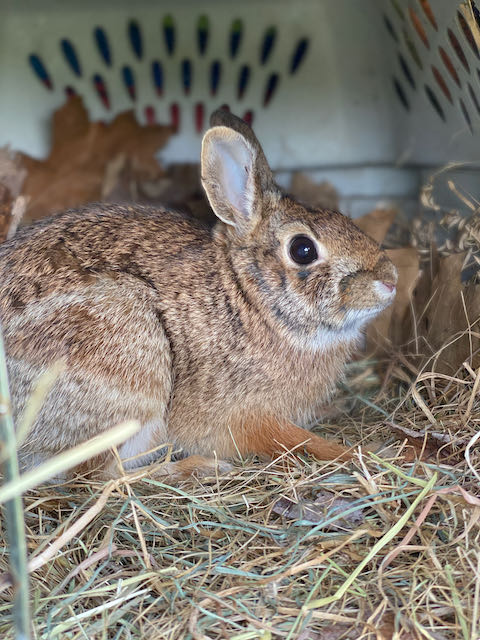
in Mid-April an Eastern Cottontail was hit by a car and came in with lack of motor control. She made a gradual complete recovery and was returned to her home a month later.
2022:

For a chronology of the life of Pumpkin the beaver kit and his associates, visit the Pumpkin Page.
Pop Goes arrived in early June. You can read about him in Patti’s August View from Heifer Hill column. Click below.
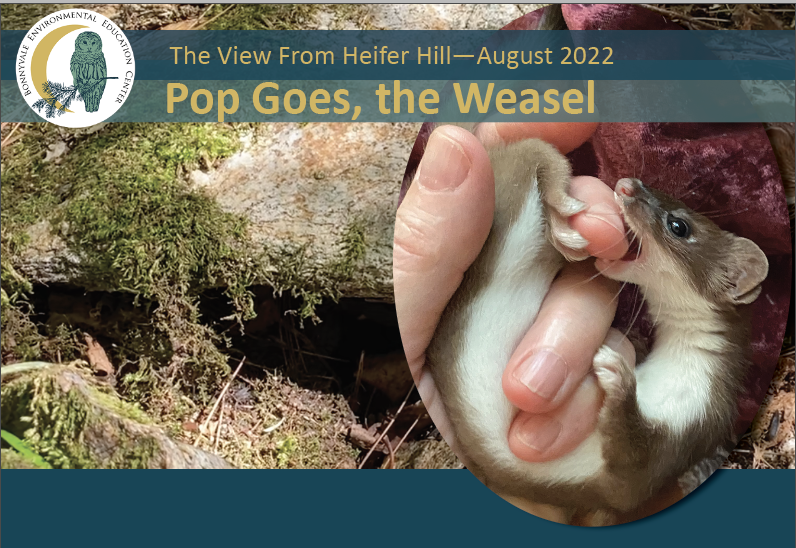
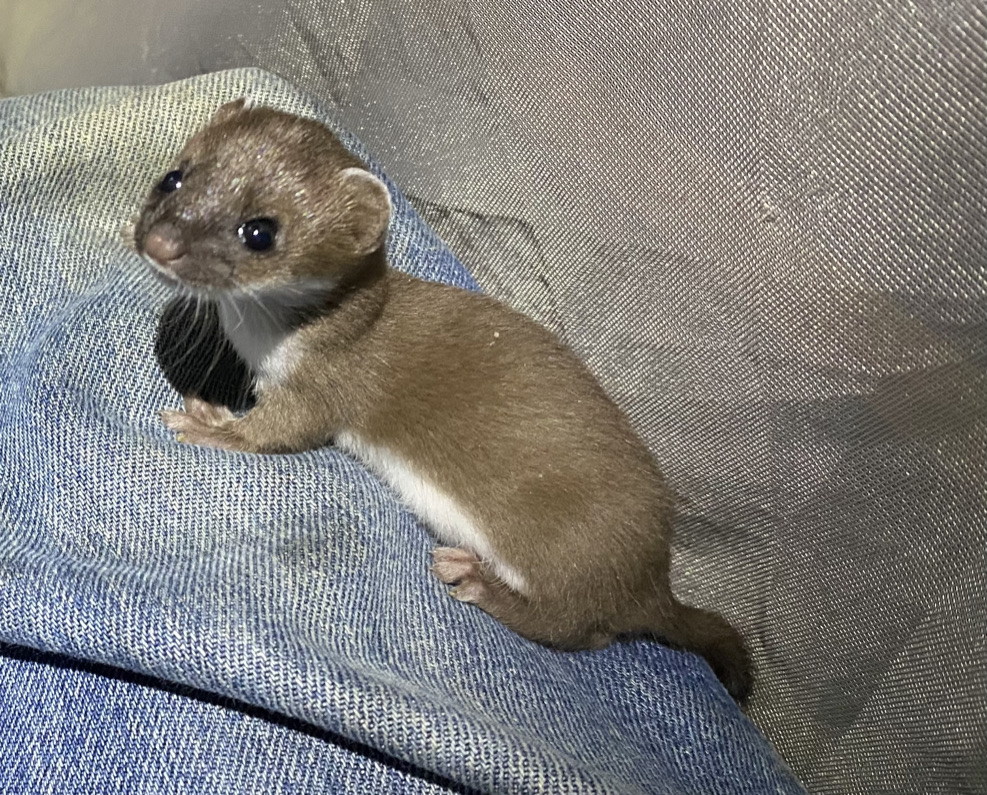
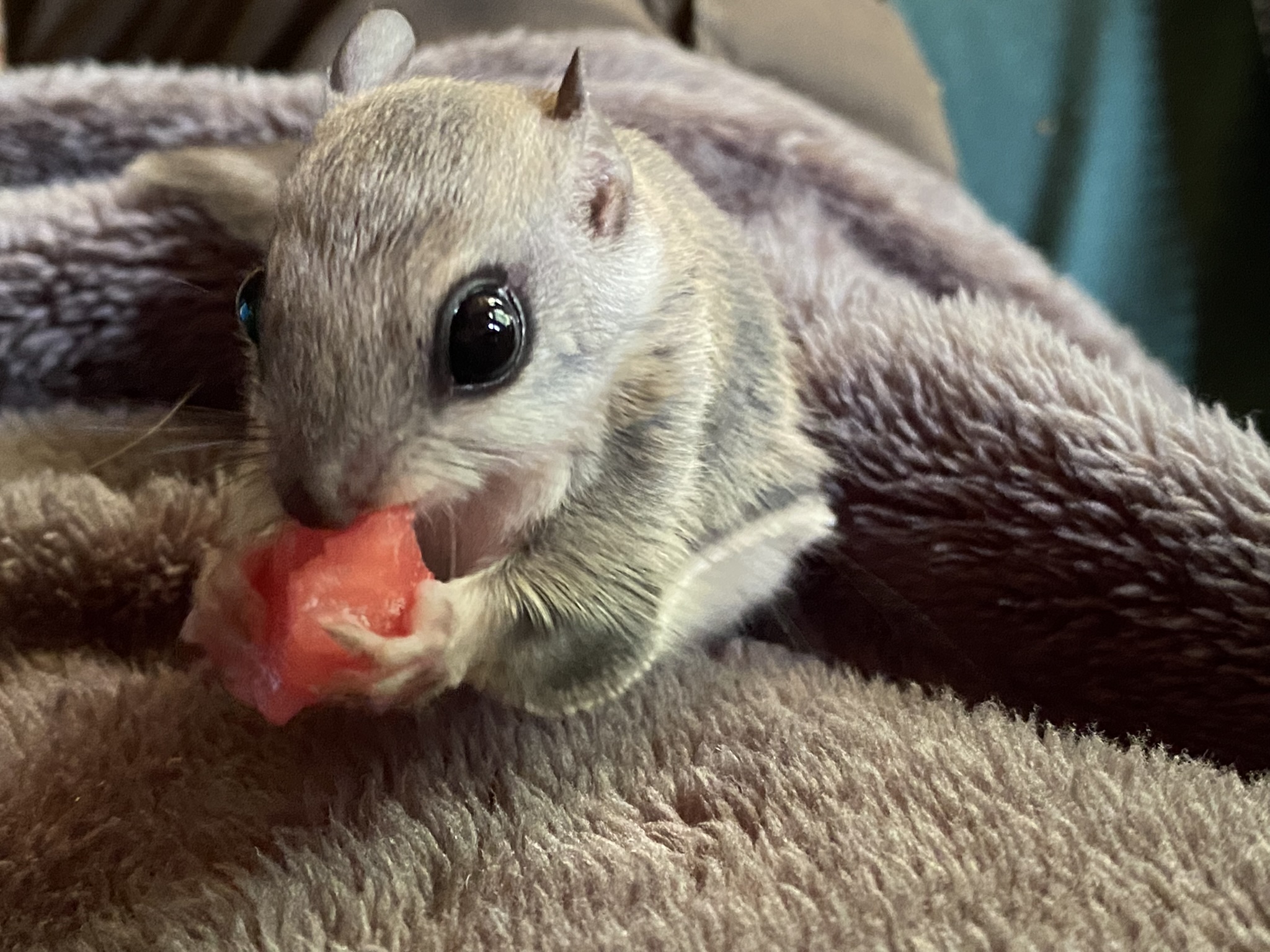
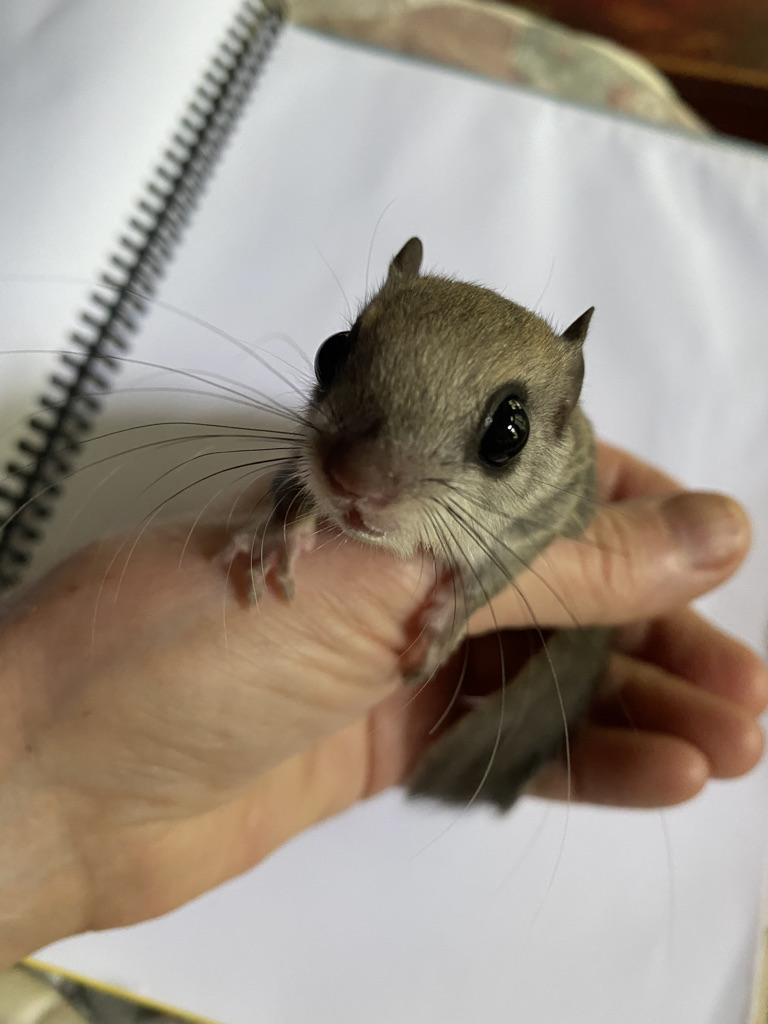
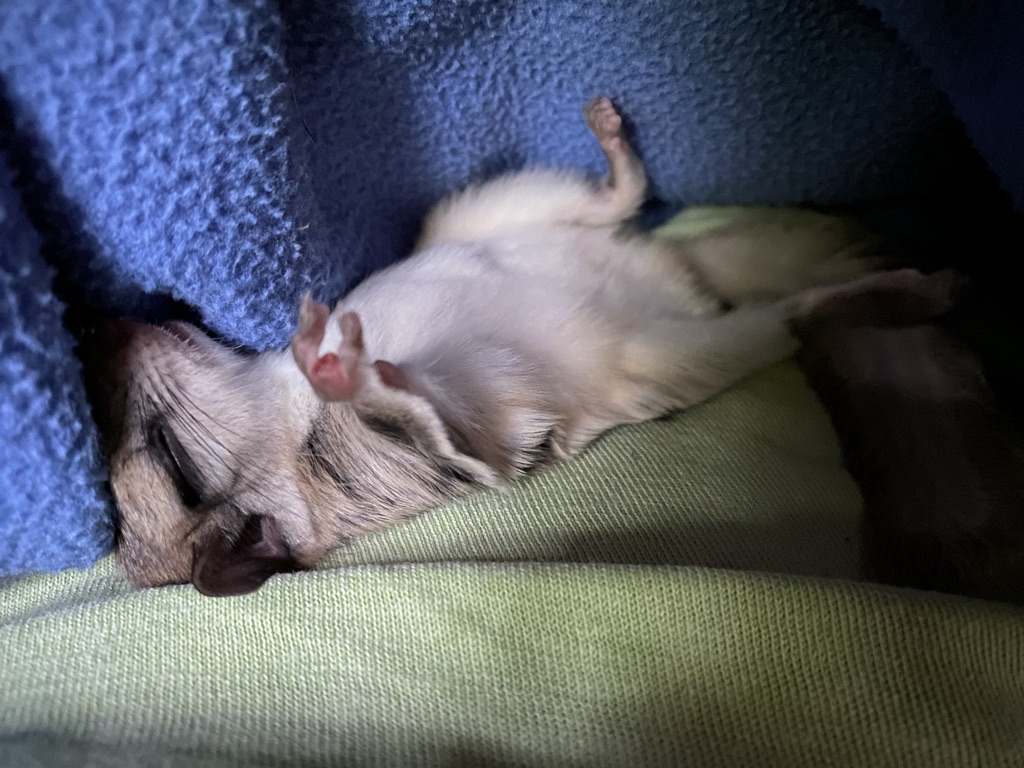
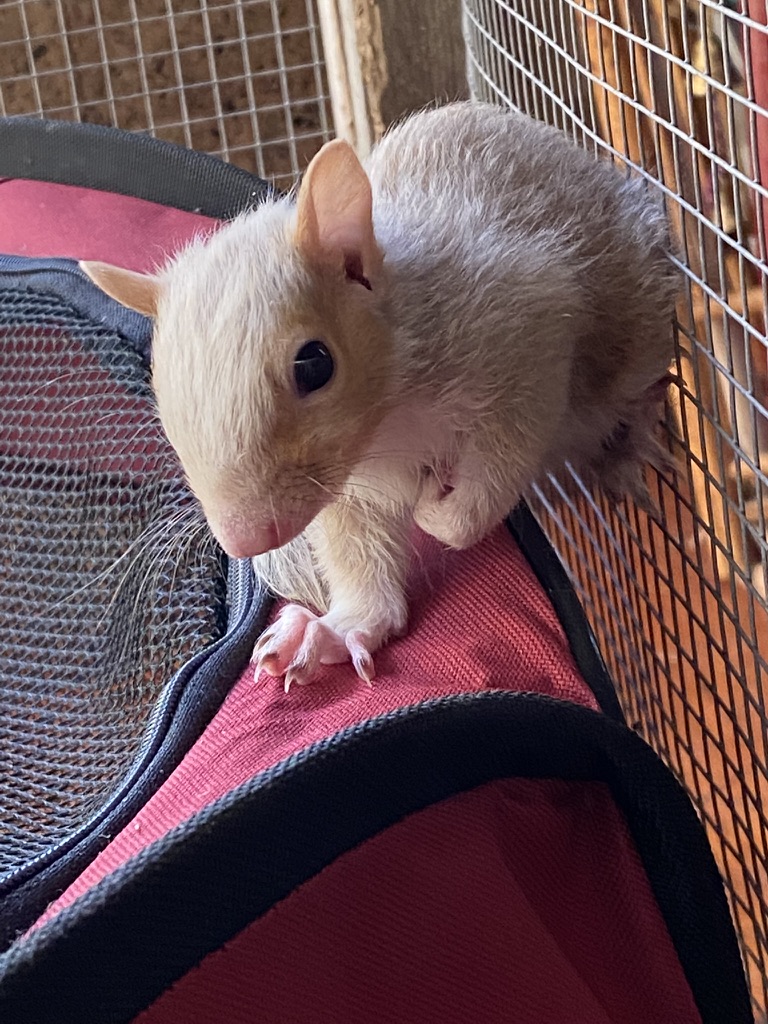
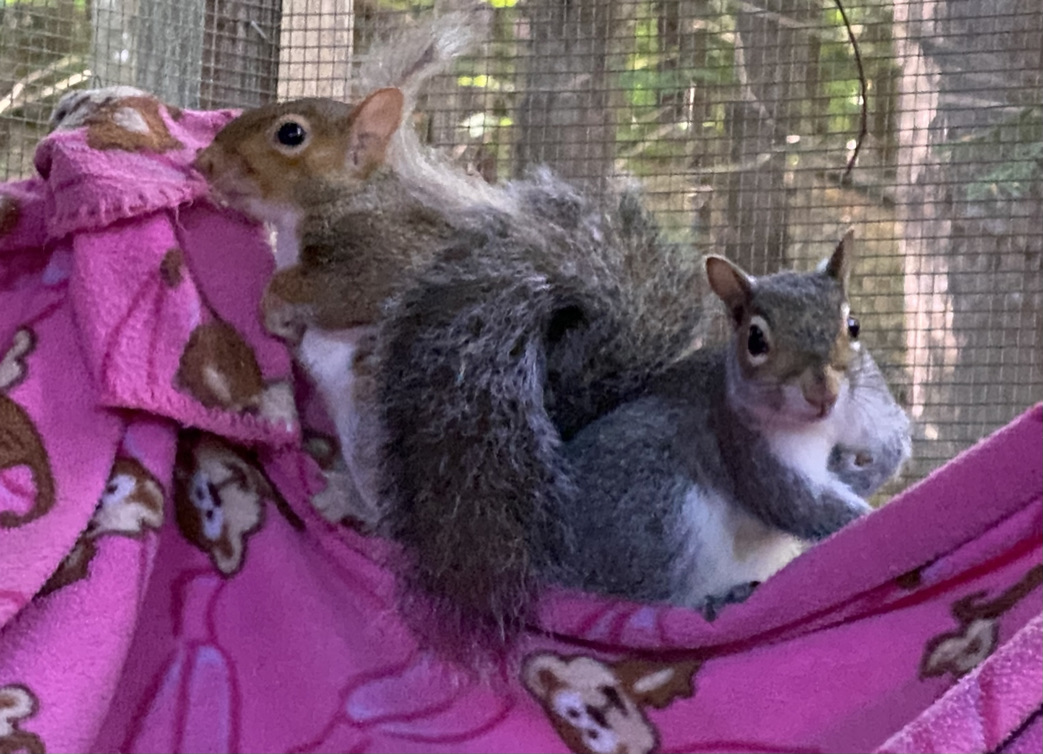
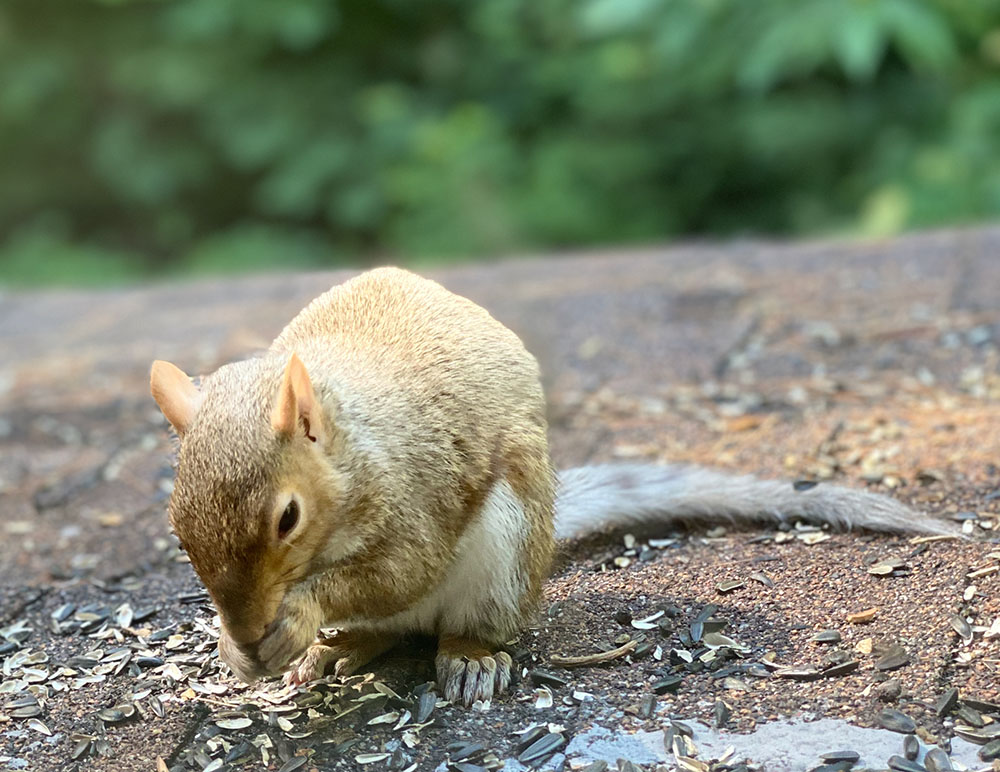
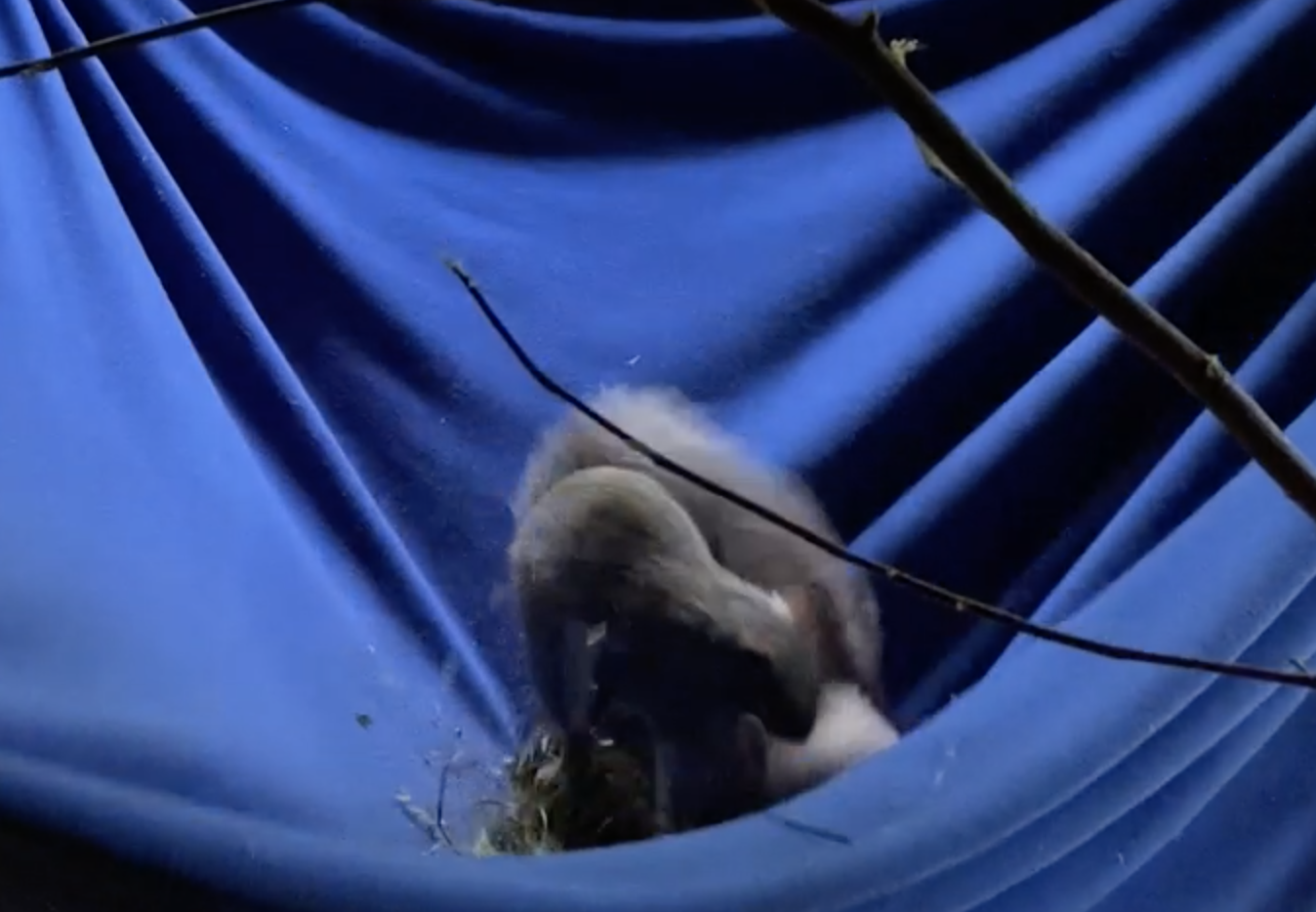
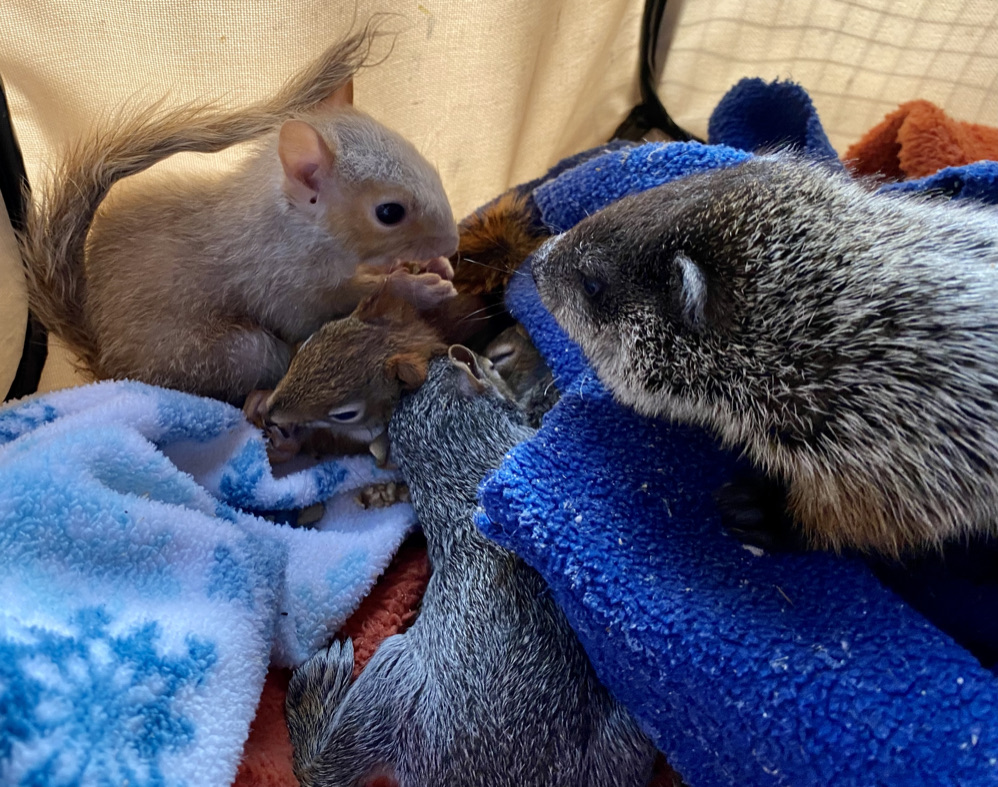
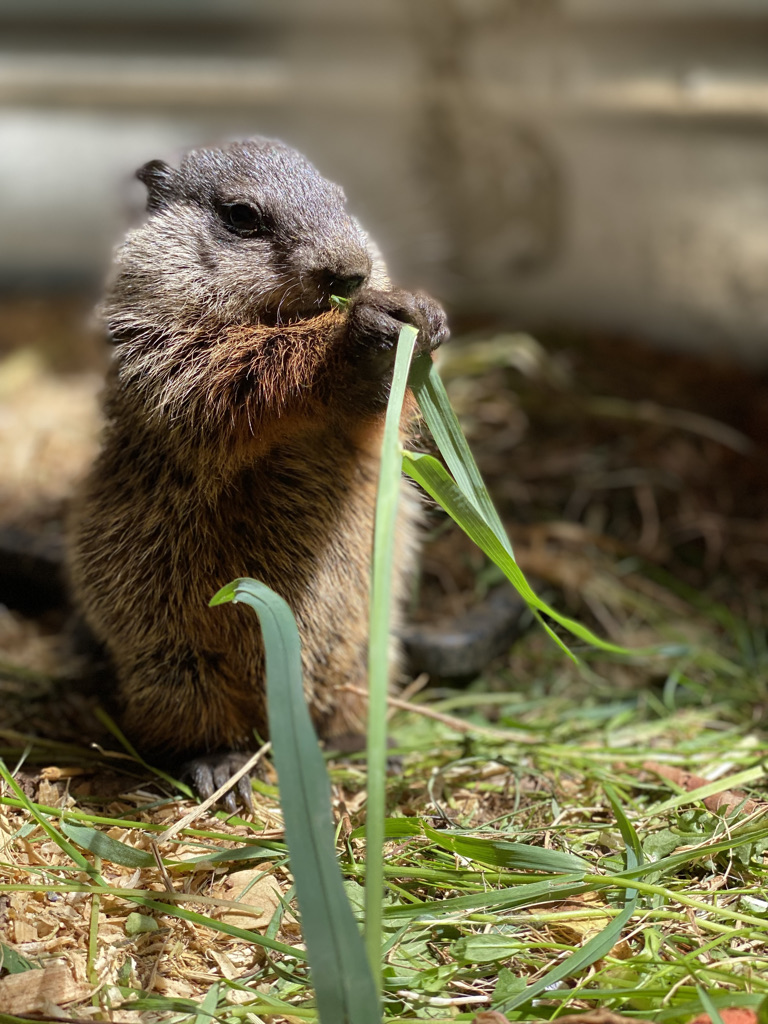
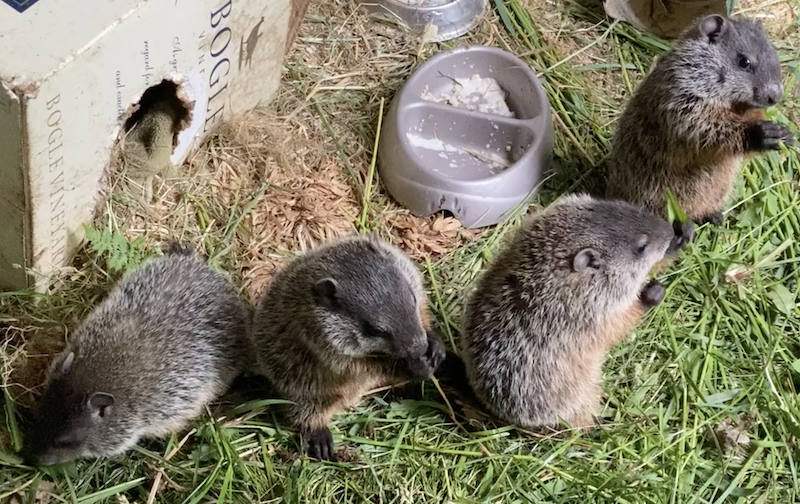
Pumpkin & Pye
These beavers are now two-year-olds and have been released. For their big news, read the latest View from Heifer Hill column:
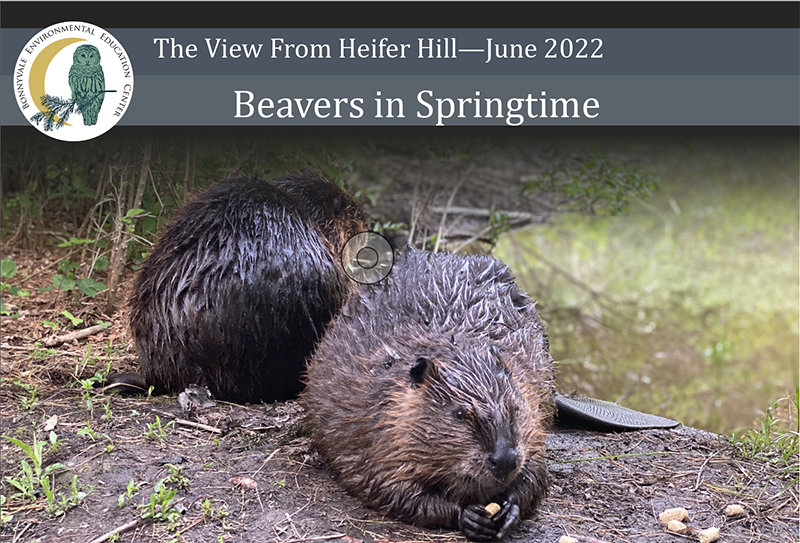
Listen to the beavers in the lodge. Most of the sounds are from Pye. The little squeaks are the kits.
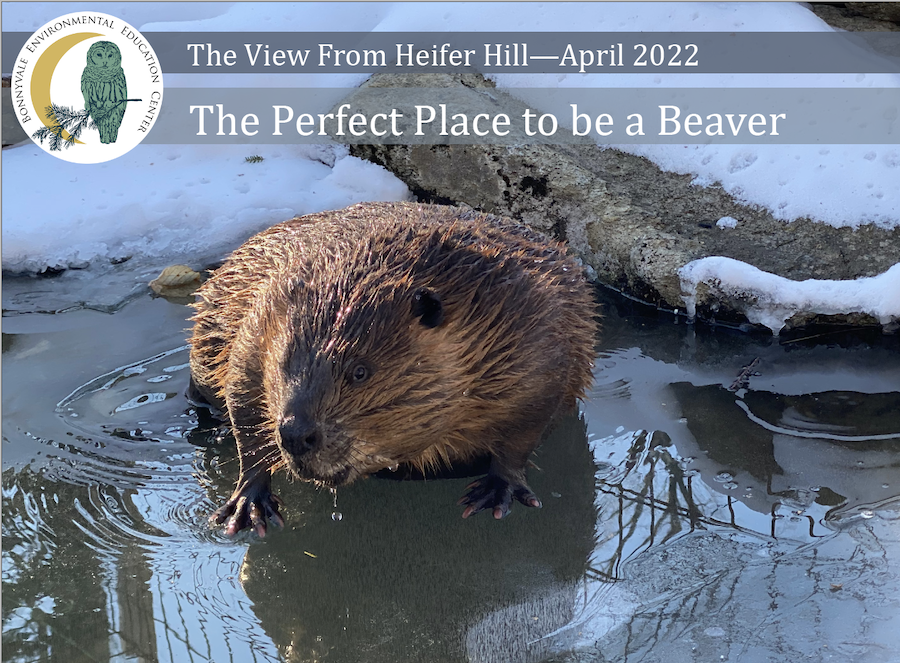
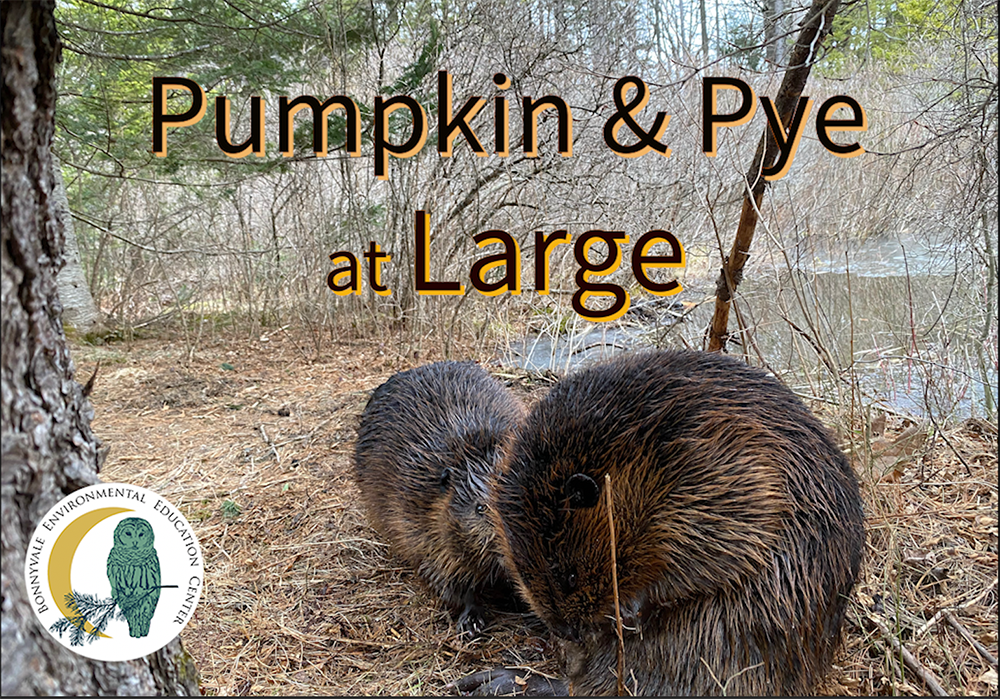
2021:
In June, an injured yearling beaver, Pye, joined yearling Pumpkin in our care. You can read Pumpkin’s story below. Pye has recuperated, and she and Pumpkin are now at work preparing for their first winter in a pond.
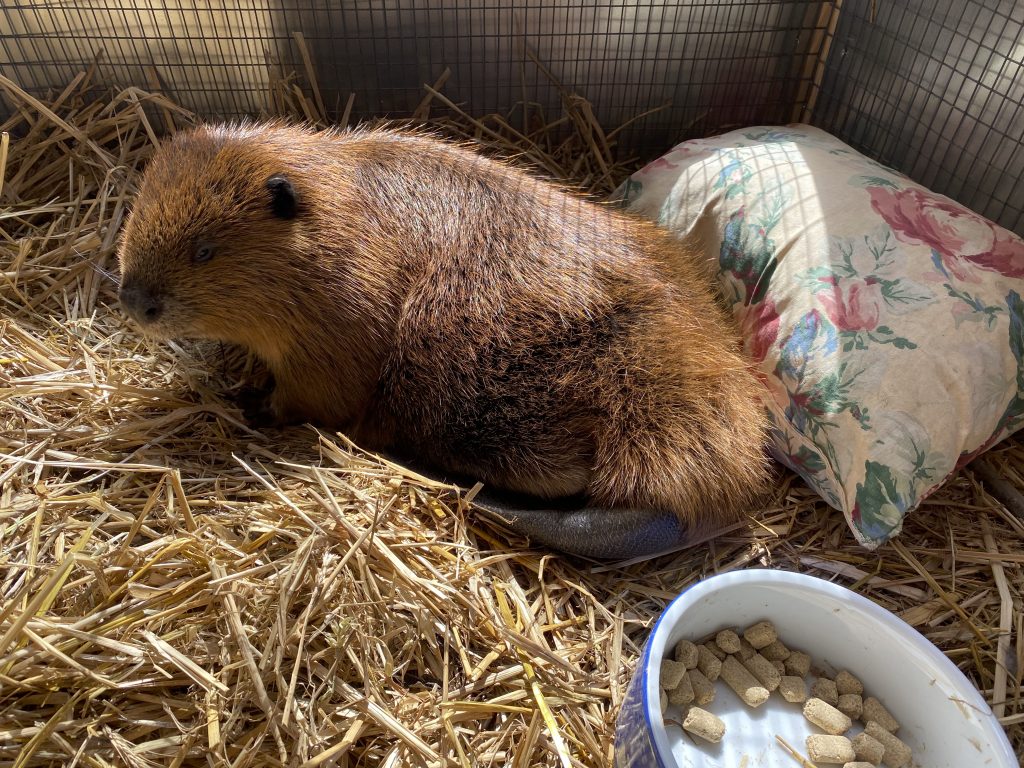
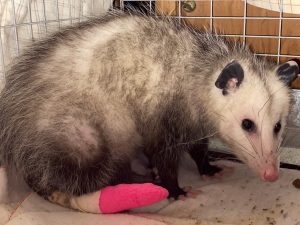
This opossum was believed dead when dogs dropped her at Susan’s feet. Susan called us, hoping we could save the joeys in the mama’s pouch. While we talked, the opossum revived—she had, of course, been playing ‘possum. It turns out that the dogs had done the opossum a favor. Previous injuries to her tail had become badly infected and the tail needed a partial amputation. The opossum has made a full recovery and will soon return to Wilder with her four healthy joeys. Thank you Dr. Kelly and the team at WCHS!
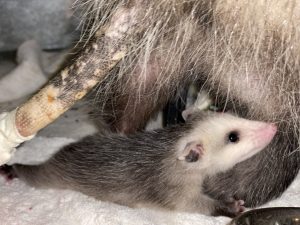
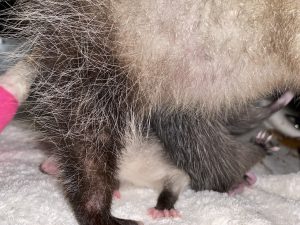
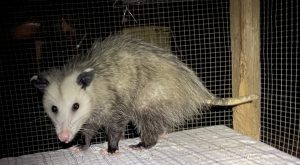
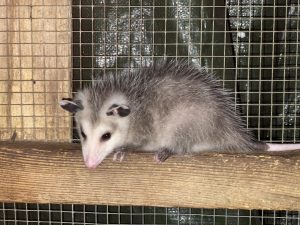
Now that woodchucks have been removed from the rabies vector list in Vermont, we are licensed to rehabilitate them. Four little woodchucks have been growing chubby and have been learning the skills they will need to become good little tunnel diggers—a boon to other wildlife who find shelter in their works. Read Patti’s I am a Woodchuck to learn more about them.
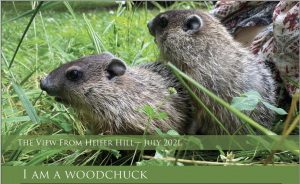
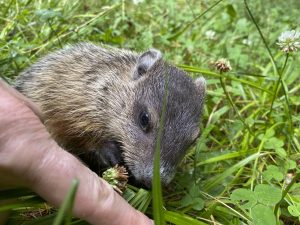
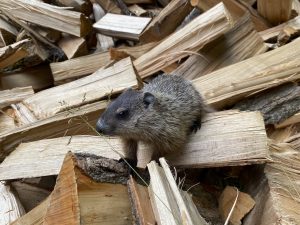
Orphaned squirrels began arriving on April 10 this spring, with four babies from Rockingham. It has been a steady trickle since then, with eigtheen orphaned gray squirrels arriving by the end of May. Most of these squirrels were in pretty rough shape and several had been injured in falls, yet fifteen survived and are now active and acrobatic. It is so satisfying to watch them develop the skills they will need to become planters of oak trees.
We also have a couple of little red squirrels and a few baby possums. Never a dull moment.
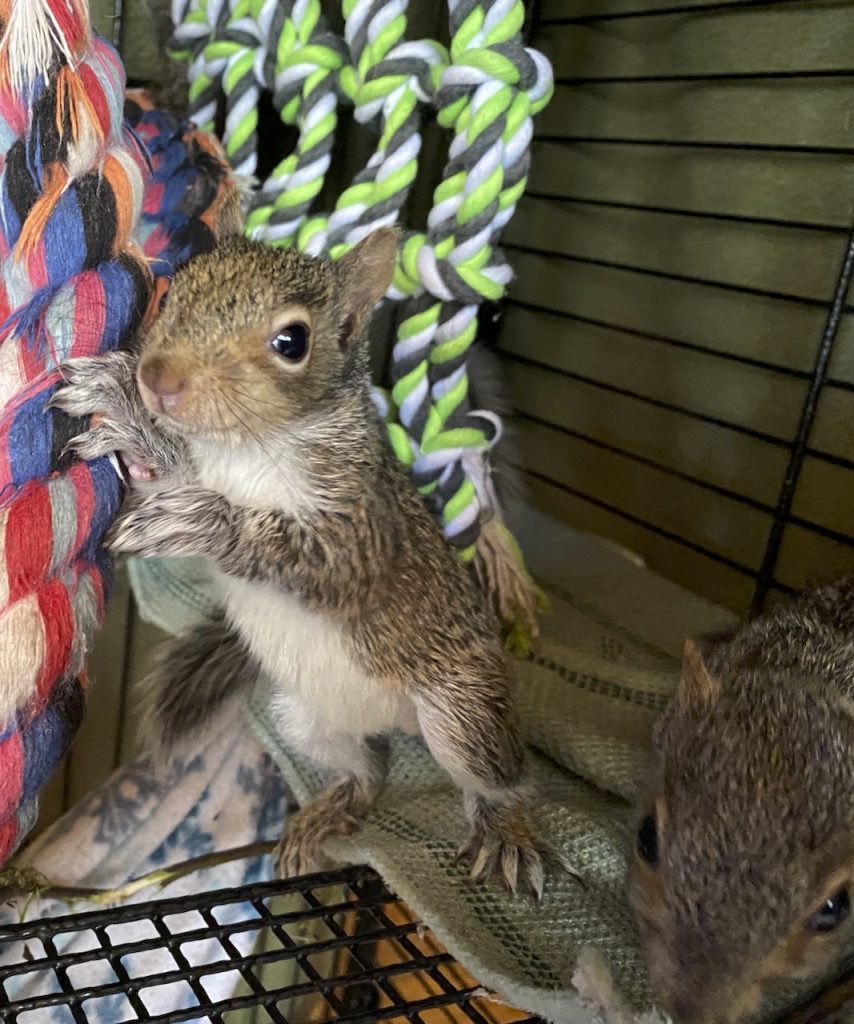
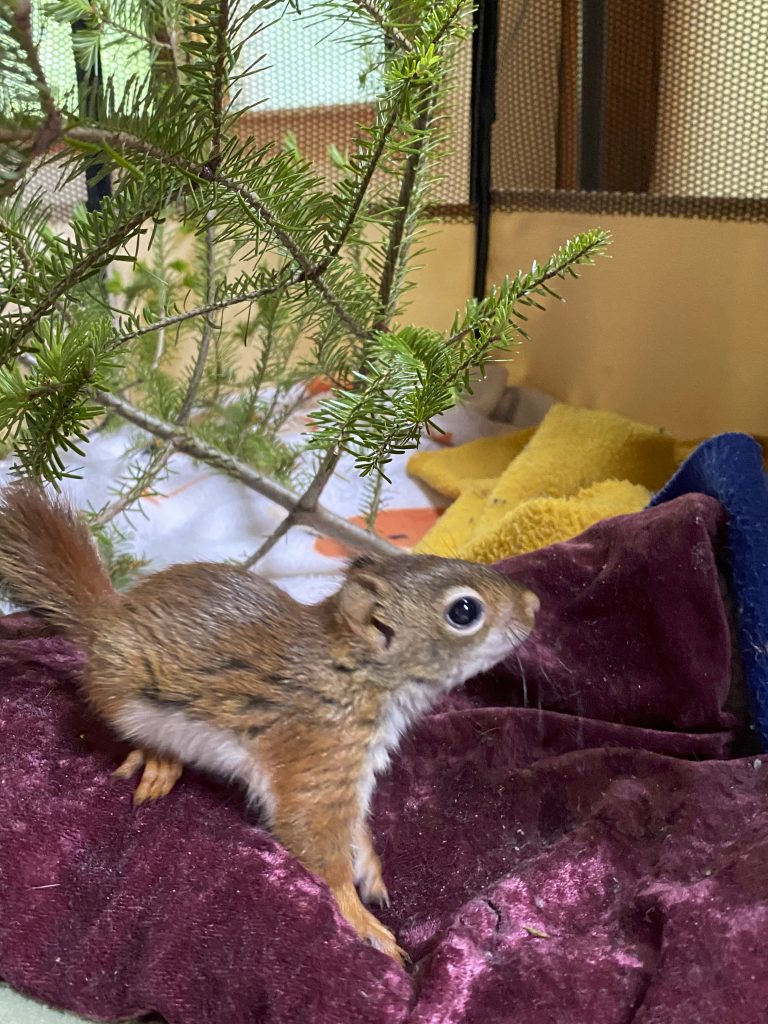
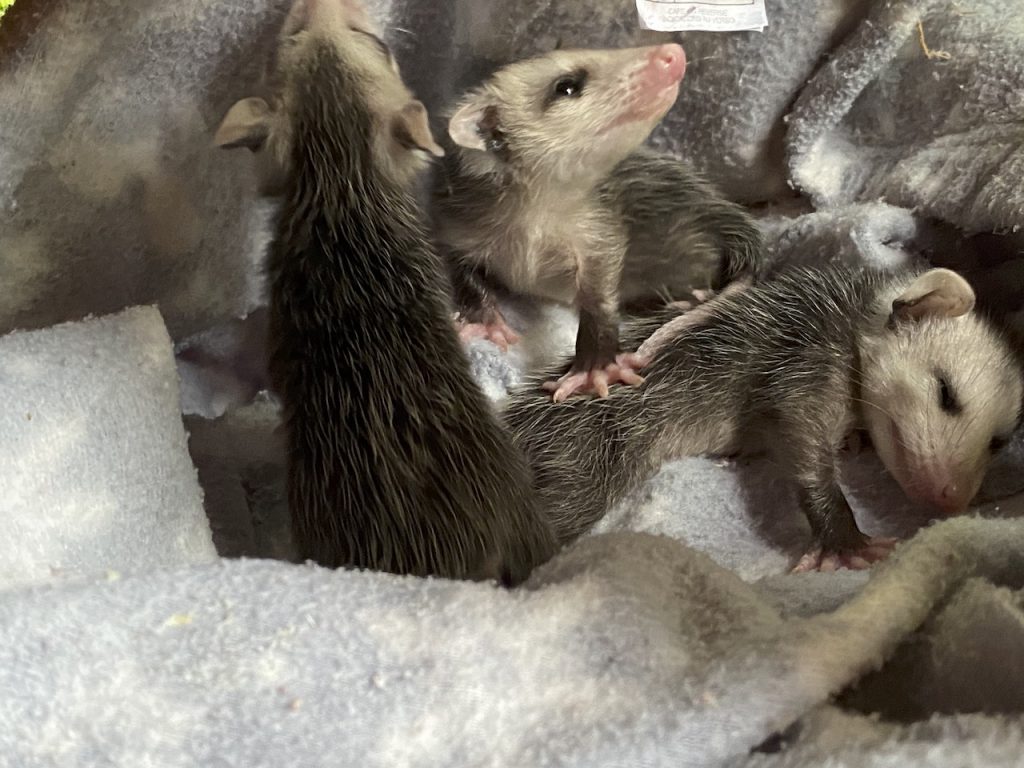
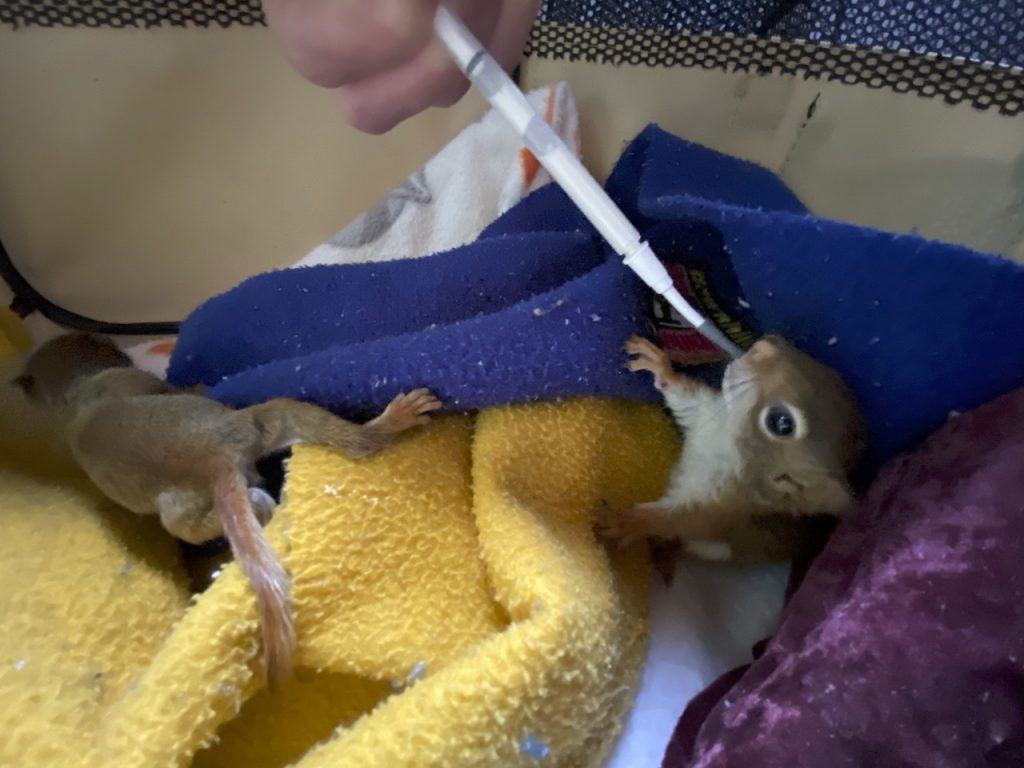
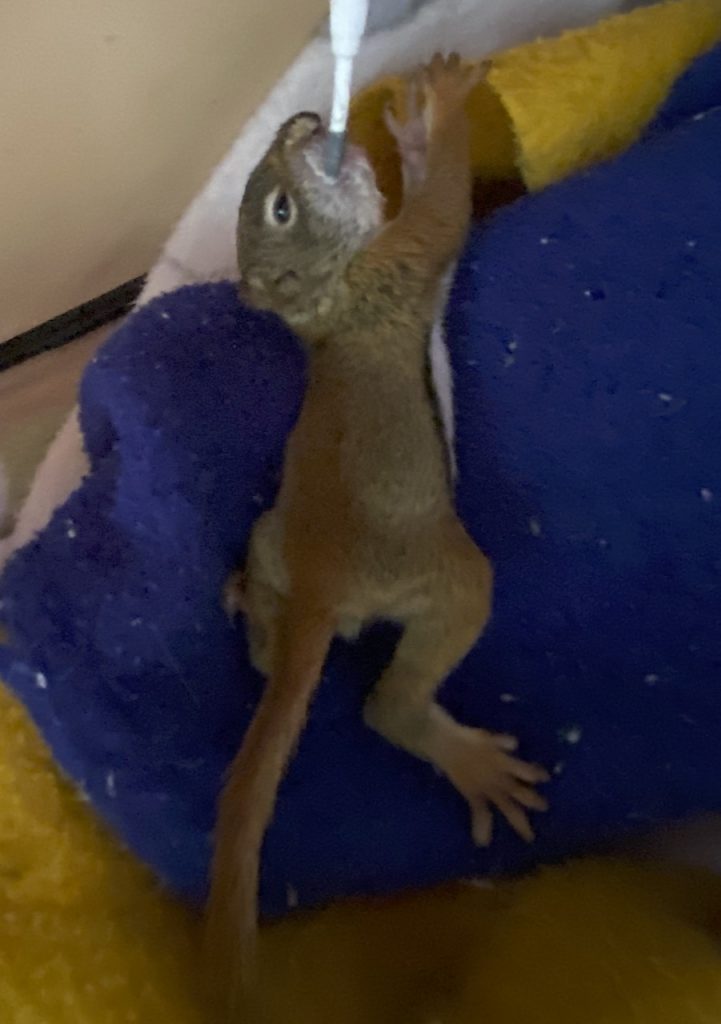
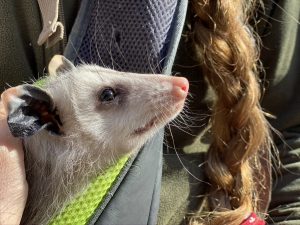
2020:
Persephone the possum (Virginia opossum, officially) arrived with metabolic bone disease. She is very sweet and comfortable with people, which is a good thing since she is likely to be nonreleaseable and may become a BEEC opossum ambassador.
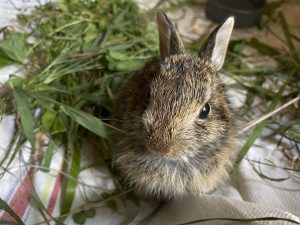
This little cottontail was found on the Winston Prouty campus with a terrible gash on her neck. She healed up nicely.
Bertie the bobkitten was hit by a car in Springfield and suffered head trauma. When she arrived she had some loss of motor control and could not see. She recovered fully and was returned to her home. The site proved to be bobocat paradise, tall cliffs in a large block of forest, with scrubby meadows nearby. Bertie shot off toward the ledges, likely the place where she was born, before the photographer was ready, so you will have to imagine how she looked as she returned to home and freedom.
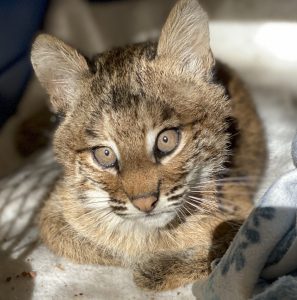
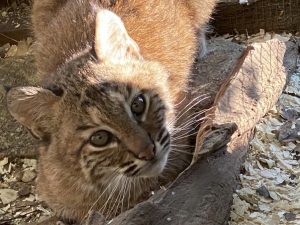
Three orphaned beaver kits arrived on May 18 after their mother was killed by a car. The kits had a number of health issues and one of them did not survive. The remaining remaining pair, Pumpkin and Curly, grew fat, glossy and enjoyed all of the amenities of the Beaver Lodge, especially the pool. We send a big thank you to Dr. Svec of the Vermont /New Hampshire Vet Clinic for his help with these beavers and all of the others special needs residents over the years!
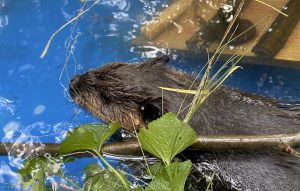
The kits moved to their new winter enclosure at the Training Matters facility (Thank you, Sara and Craig!).
In early November, Curly, pictured above, died unexpectedly. A autopsy revealed a portion of her intestine had been deprived of blood flow by some supporting tissue. Poor Pumpkin was left alone, so Patti has been spending a lot of time with her.
Here she is being comforted by a friend.
Trying to work in a beaver lodge poses a number of challenges, but Pumpkin is always willing to help:
We suspect Pumpkin would rather have a beaver friend to play with, and another rehabilitator in Vermont has a kit the same age as Pumpkin, a male. He also has a former beaver pond site that has been waiting for beavers to return for decades. Pumpkin could have a real headstart on life with a mate and a habitat in place when she is ready for independence (at two years for most beavers).
First we had to confirm that she is female, which required a X-ray.
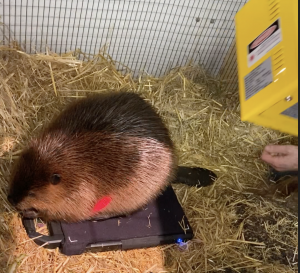
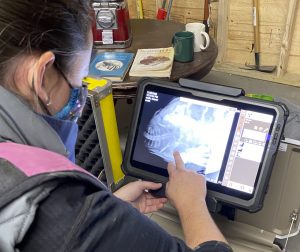
Yup. She’s a girl. We’ll let you know how the first date goes!
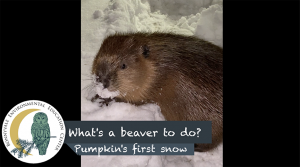
Watch Pumpkin’s first encounter with snow
On January third, Pumpkin took a road trip and moved in to what we hoped would be her new home in Roxbury. Beavers are extremely territorial and will attack any other beaver that strays into their territory. An introduction would have to be done very carefully. After a bit more than two weeks with Pumpkin and BK living next door to each other, they were put in the same enclosure. According to Laura, one of the beaver wranglers, the two began vibrating with energy and then attacked each other. They were quickly separated before they hurt each other. This arranged marriage was a failure. Could Pumpkin be a male after all? We arranged to have Pumpkin x-rayed again before deciding what to do, and this time the elusive little bone could be seen. Pumpkin is a male, and has returned home.
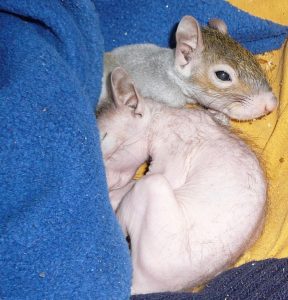
A strange skin condition in young gray squirrels has appeared. Three poor, itchy, bald gray squirrels have come in from two different litters. One had been on its own for too long and couldn’t be saved. One of the two littermates has responded well to treatment and is regrowing his coat. The other came in in worse shape and lost her vision. She had to be euthanized. Her brother has been released and is a beautiful squirrel!
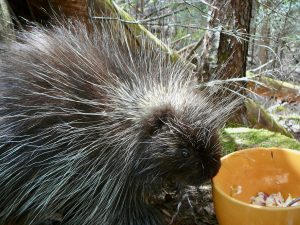
Mo, the independent and opinionated porcupine who was orphaned last summer, has reappeared this spring having survived his first winter in the wilderness. He turned his nose up at his former favorite meal, but came over for a brief hello.
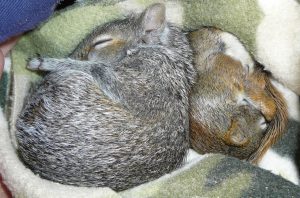
This young gray squirrel and red squirrel are keeping each other company until youngsters of the same age and species arrive. They might end up staying together. I don’t think they’ll mind.
UPDATE: Bibbins and Jonathan Wiggens are now released and living squirrel lives. They no longer hang out together, but are happy to see each other when they have encounters.
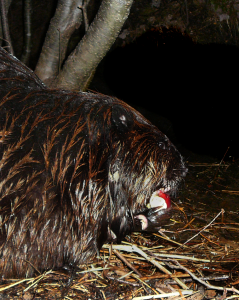
Patti has been treating wild beaver friend Dew at her pond in the woods. Dew survived a bear attack in late April. She had a number of wounds. and has been receiving antibiotic-laced apples twice a day. Several days after the attack, she appeared to be near death, but made a dramatic overnight recovery. While convalescing, she met and moved in with Henry, another beaver who lives a half mile upstream.
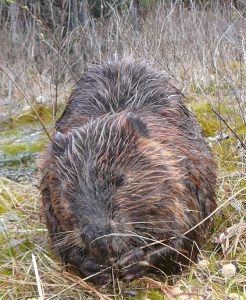
The first of the spring babies arrived in Late March. Rob and Tonya discovered the little squirrel curled in a ball and shivering next to their house. Wilson is doing fine and now has several big, bouncy friends.
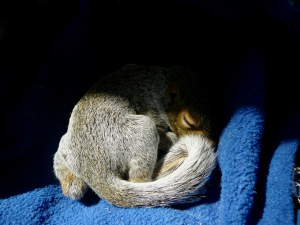
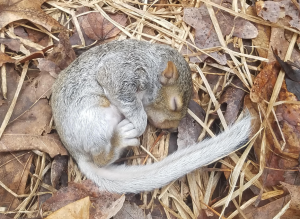
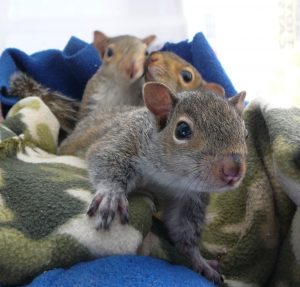
2019
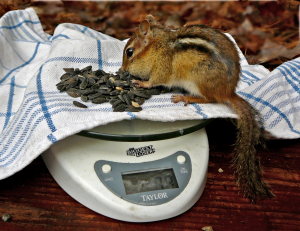
As of November 1, 2019, all of our charges have been released. Cheeky the chipmunk is demonstrating how rapidly she can fill a burrow with acorns and sunflower seeds. You can read more of her story here.
2020 update: Cheeky made it through the winter and visits regularly.
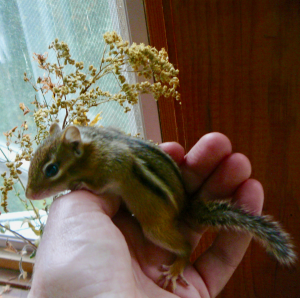
Mo, the baby porcupine rescued earlier this summer, was released in August. He returned to our care when a neighbor found him with an injured leg. After seven weeks of cushy convalescence, he has waddled back to the wilds to try again. You can read more of his story here. Below, he is feeling his oats (literally) on release day.
Nicole in Bennington rescued a baby mink from a cat in mid-May. About a week old, the little mink was just growing fur. By July he was full-throttle mink. We spent a lot of time at the brook together. In the video below you will see the only prey he managed to catch—his own tail. Through the last weeks of July and the beginning of August he began to venture out on his own, and for increasing durations. He has now decided to be a wild mink. We hope he is thriving. Read a column about his trip to the brook here.
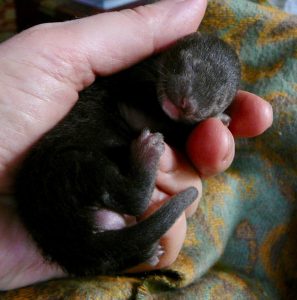
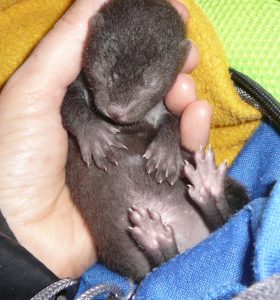
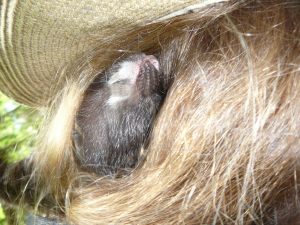
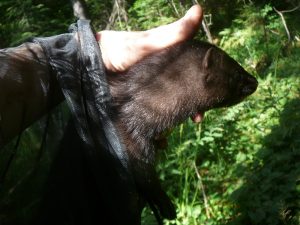
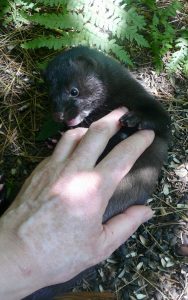
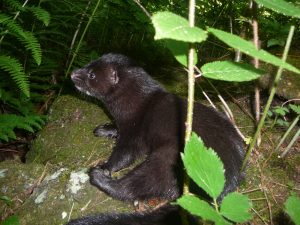
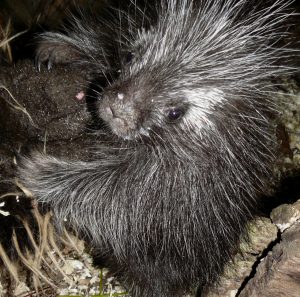
Sue saw this baby porcupine huddled by her dead mother on the side of the road. She and her daughter Abby figured out who to call. The little porcupine is now having a great time learning to climb and playing with his porcupine puppet. You can read a story about him here, How do you Hug a Porcupine?
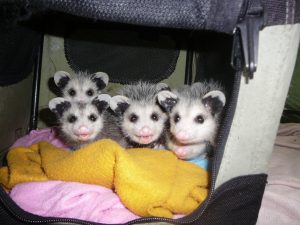
This family of ten little possums was gathered together and brought in when their mother was killed by a car. All are thriving.
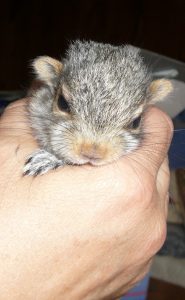
The squirrel population is much lower than it was last year, so we have had fewer orphaned squirrels coming in. We do have five. Rachael and Victoria brought the first squirrel in (Victoria named her Princess). She is very fluffy and extra cute, but has some congenital abnormalities that will make her non-releaseable.
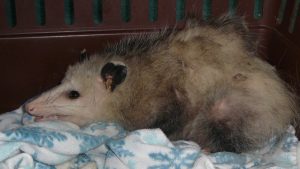
Amanda called about an opossum that had been attacked by a dog. The tiny babies in her pouch were scattered around the yard. Amanda gathered them up and put them back in the pouch. Dr. Svec at the VT/NH vet clinic gave her an evaluation and antibiotic injection. Thank you, Dr. Svec! This remarkable mother then adopted two opossums that arrived that had become separated from their mothers.
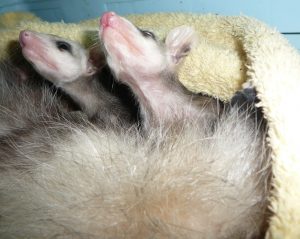
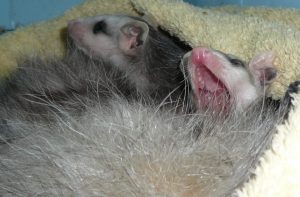
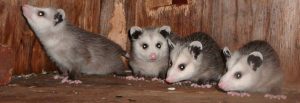
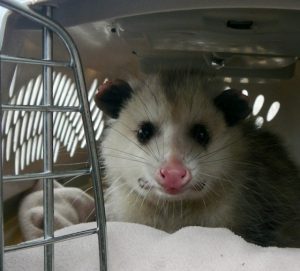
All thirteen of the opossums that we cared for during the winter of 2018/19 were released in April to begin their lives in the wild. This picture shows one of the two pictured below on the day he returned home to Dummerston.
Here is video showing the possums shortly before they were released.
Within a week they doubled in weight and were clean, fluffy and feeling much better. They have returned to Bill’s house to start gobbling up ticks. Note the frostbitten ears.
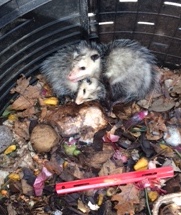
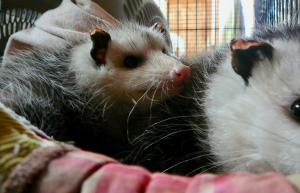
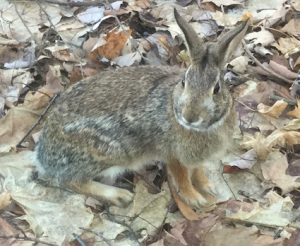
This beautiful cottontail was happy to be returned home after being hit by a car in December.
Eleven baby possums were found in the pouch of their deceased mother. They were found late in the year and require care through the winter. Scroll down to see how they are progressing.
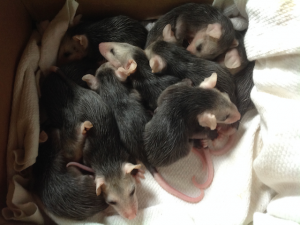
Suppertime for Possums
Below, the opossums in mid December are excited about the arrival of a Christmas tree.
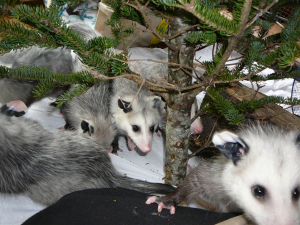
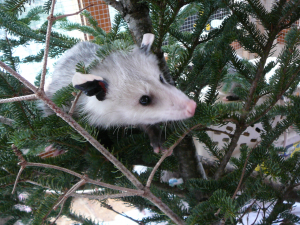
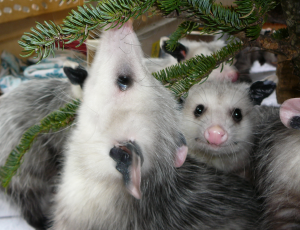
The possums got a new exercise wheel for Christmas. They will be in great shape by release time!
This elderly porcupine was observed lying in the same place for a few days. She came in for treatment, and returned home, feeling much better, two weeks later.
With so many squirrels and so little to eat, it seems that many squirrels did not have a late summer litter. Only three orphaned squirrels needed care this fall. Two siblings were found by different parties by the parking garage in Brattleboro. One was in the process of drowning in a ditch after a torrential rainstorm and had inhaled some water, but both pulled through, and have been released.
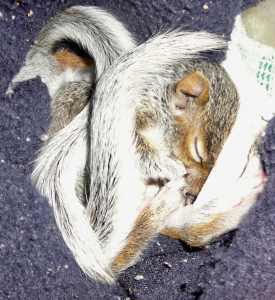
Amy, Ellie and Katie found a little porcupine on their woodpile and could tell that he wasn’t doing well. I came and got him, and he was very weak and wobbly. We aren’t sure what was wrong with him—he is one of five sick porcupines that have come in or been reported in the past year. He responded to treatment and TLC and made a full recovery. He is a very sweet, friendly guy. He was returned to his home in mid August. We got an e-mail from Amy a couple of weeks later saying she saw him again enjoying a porcupine summer.
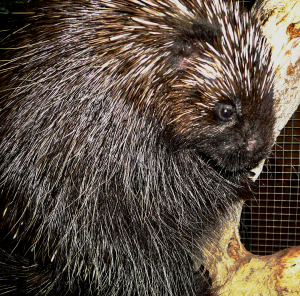
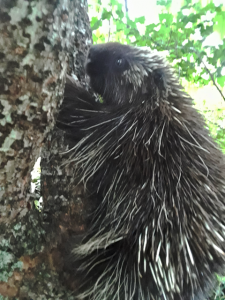
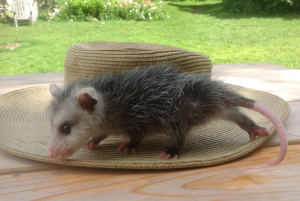
Liz found Old Fezziwig, the baby possum, lying on a concrete slab in her backyard one morning. He had become separated from his family, which sometimes happens. The mothers trundle along with up to 13 kids clinging to their backs. It’s no wonder they lose one on occasion. This little possum is doing very well and will soon be out gobbling up ticks.
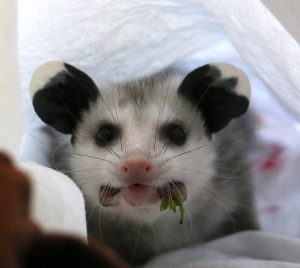
Puff is now a fine big possum and has been released in Brattleboro.
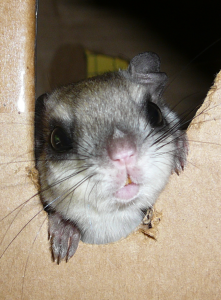
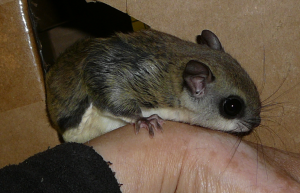
Hamilton, the orphaned flying squirrel has been released.
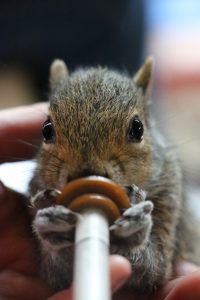
It was a busy spring baby season at BEEC. Seventeen orphaned gray squirrels came through the door, and all have now been released. It is so nice to see them enjoying playing in the trees.
One amazing little squirrel broke her leg badly during the big wind storm (thank you Dr. Svec for the x-ray!). It was in a position where it couldn’t be immobilized, so we had to hope the bone would fuse. It did! She has been released.
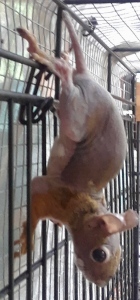
MR CLEAN AND CURLY
In late May, neighbors brought me a very strange creature, a young red squirrel that was completely bald, except for its muzzle and paws—like a strange poodle cut. He was quite chilled, but quickly revived, and turned into a little rocket squirrel. I had no other squirrels his age, so he spent his first week alone and unhappy. Then I got a call from Silas in Guilford. His cat had caught a red squirrel with no fur, except on his muzzle and paws. The two became fast friends (literally and figuratively), and grew their fur back. On release day, they were fully furred, except for their tails. They look a bit like arboreal rabbits now, as they leap through the trees, but soon they will look like all of the other red squirrels.
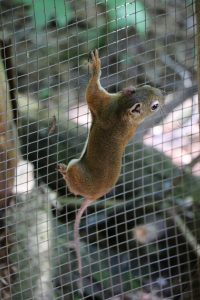
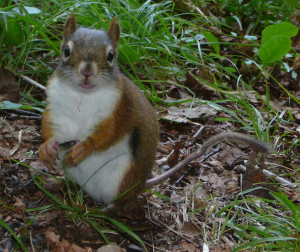
Three chipmunks and a cottontail rabbit were badly injured by cats. With antibiotic treatment and time, all four recovered and have now been released.
We have also helped some orphaned skunks and raccoons find their way to rehabilitators that could help them. Thank you Lisa, Daron, and Wendy for driving. If you are available for wildlife transport, please let us know.
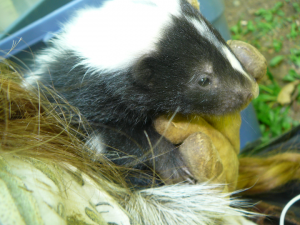
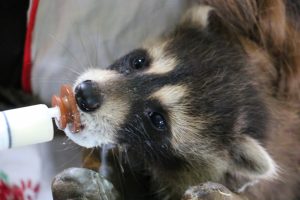
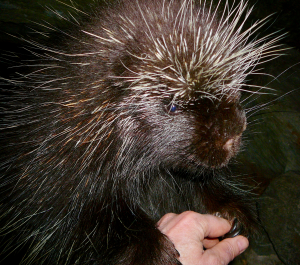
During the last week of February, Patti went out to visit the porcupines at their den sited in the woods. She was especially hoping to find Burdock, the orphan she released in 2015, pictured above, who would be finishing up his third winter in the wild. She had not seen him since the previous spring. She followed the tracks of another porcupine to the High Scenic ledges where she has been studying porcupines for several years, and arrived as the track maker, Big East, was confronting a smaller porcupine, Burdock.
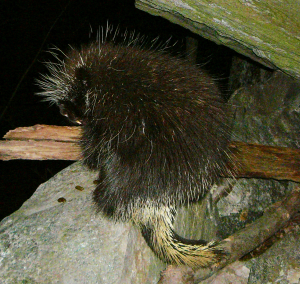
Burdock was very happy to see her, once Big East left. Sadly, she found that he had suffered head trauma sometime in the past year, probably from a fall from a tree, possibly in a territorial dispute with Big East. He was blind in one eye, and his incisors were very overgrown as a result of a malocclusion. Because of this condition, his teeth will likely continue to grow to the point where he will be unable to eat, so she brought him back into custody. After 6 weeks of observation, Burdock was able to keep his teeth trimmed to the right length, so has returned to his forest home.
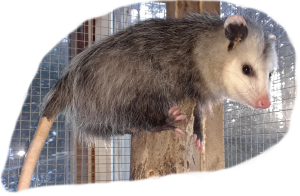
The cold start to the winter of 2018 brought a small influx of opossums. The first, a very small female, was found by the side of a road too thin and weak to move. The next day a large male was found in a farmyard with the end of his tail lost to frostbite, and very skinny. On day three, another small female was bought in after she was attacked by dogs. She appears to be uninjured, but like the others, is just fluff and bones. They are receiving a carefully balanced diet and we hope that soon they will be as fat and happy as the possum pictured here, another little female that was found on a porch in November, born much too late to survive a Vermont winter.
They were all released in April to get on with the important business of being possums.
Here are pictures of some of the many orphans that were raised and released in 2017:
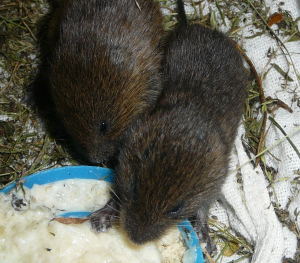
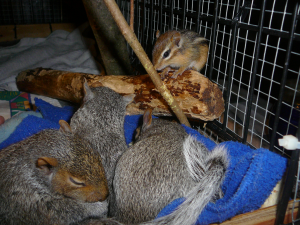
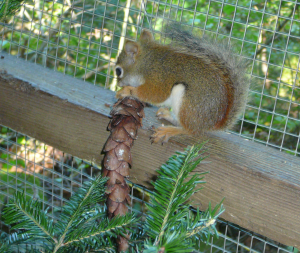
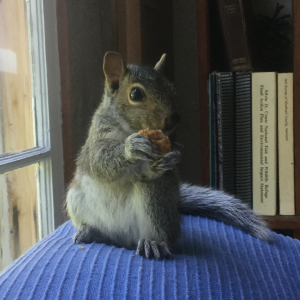
Some successful rescues from 2016:
